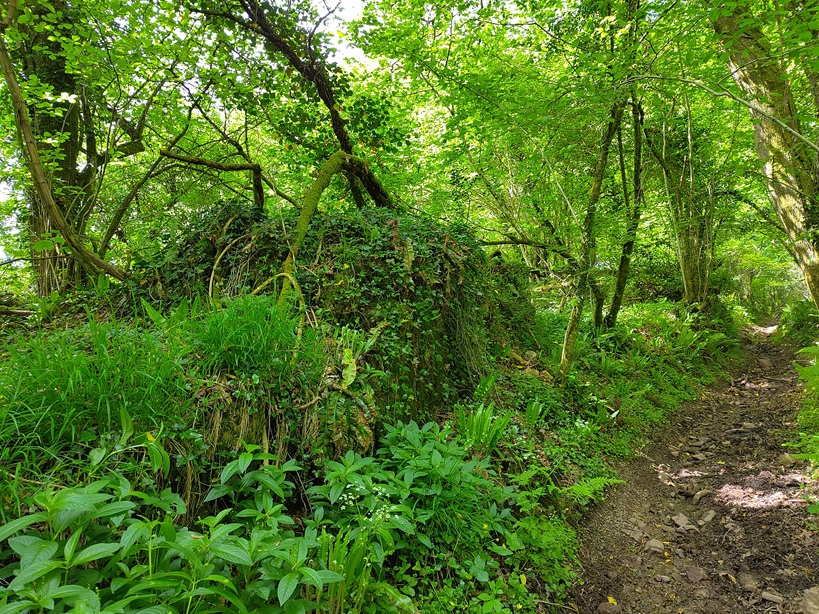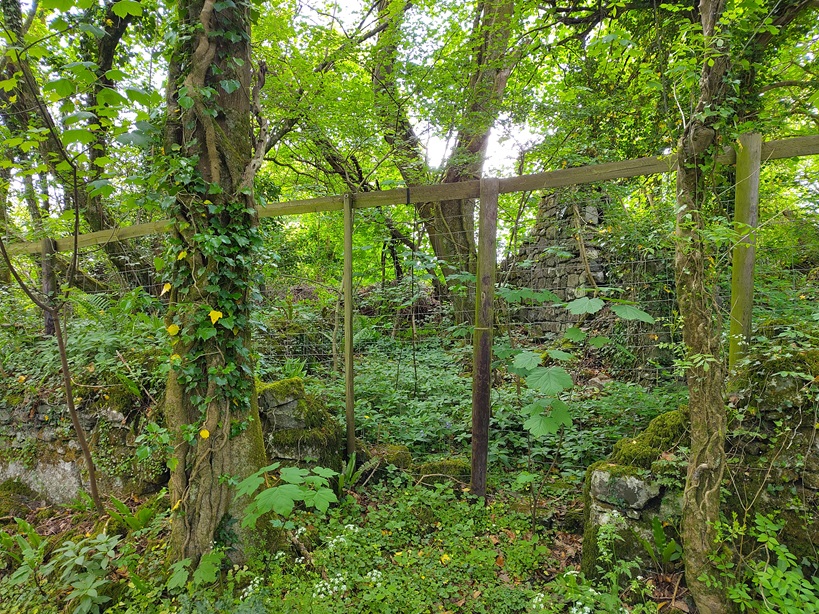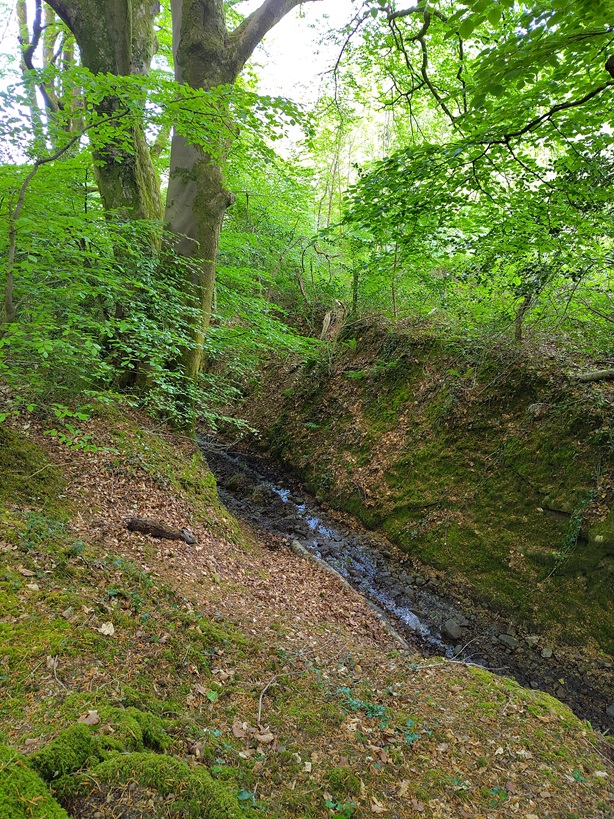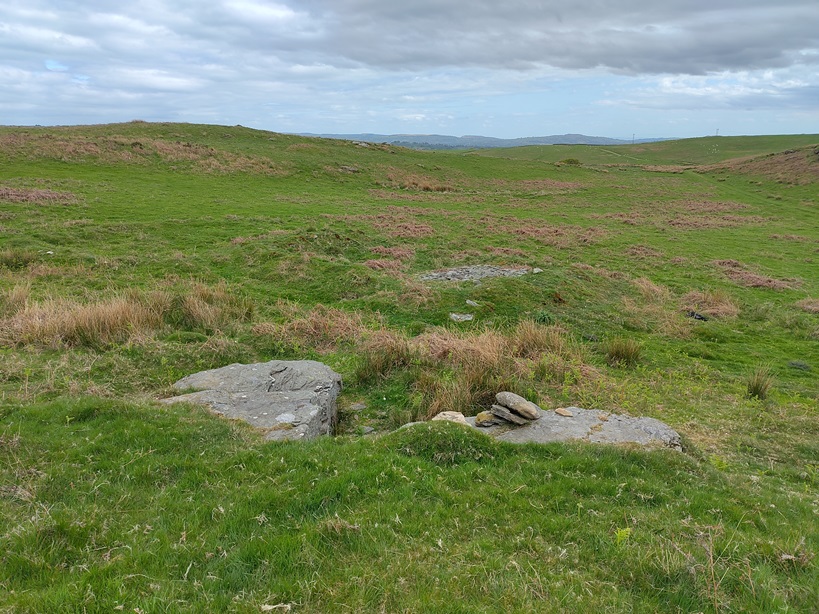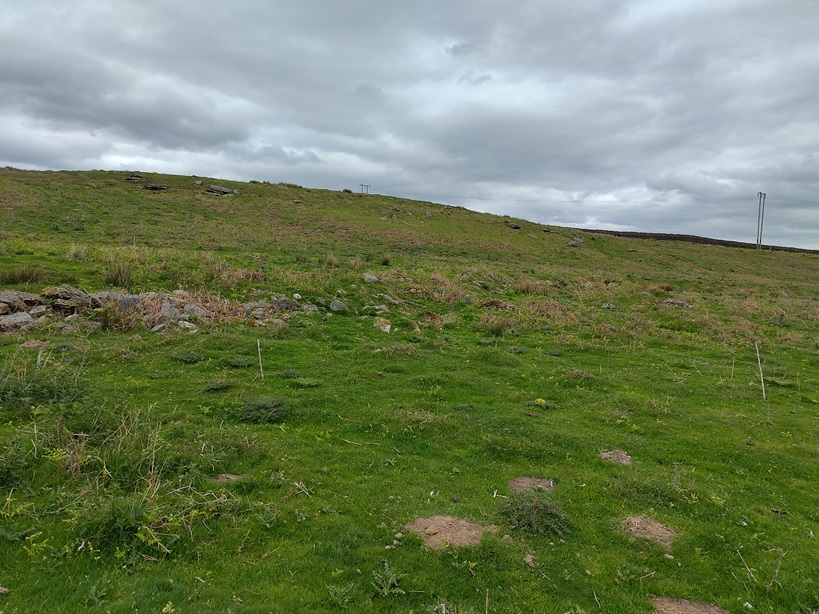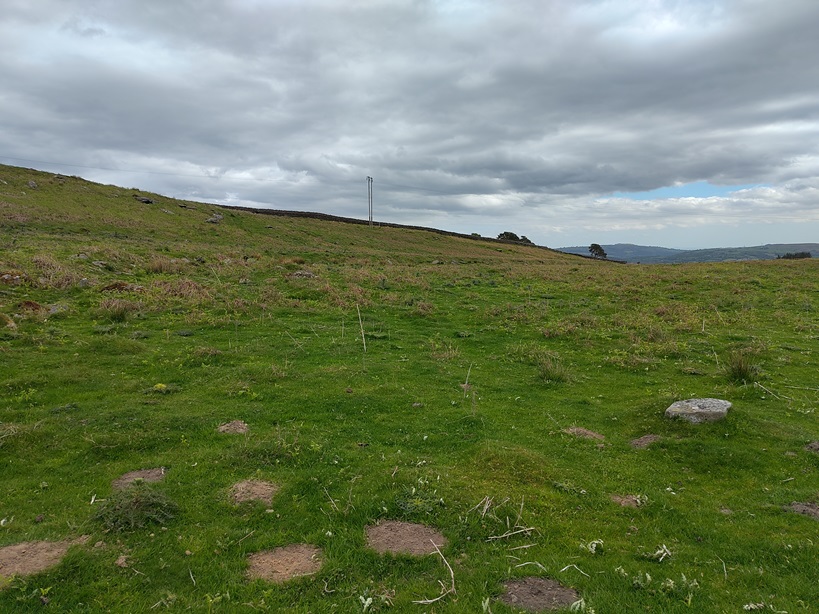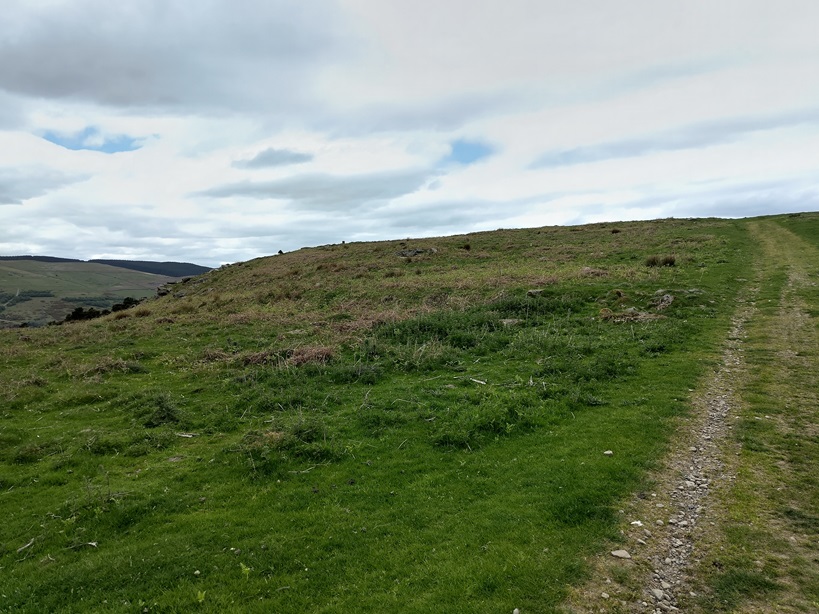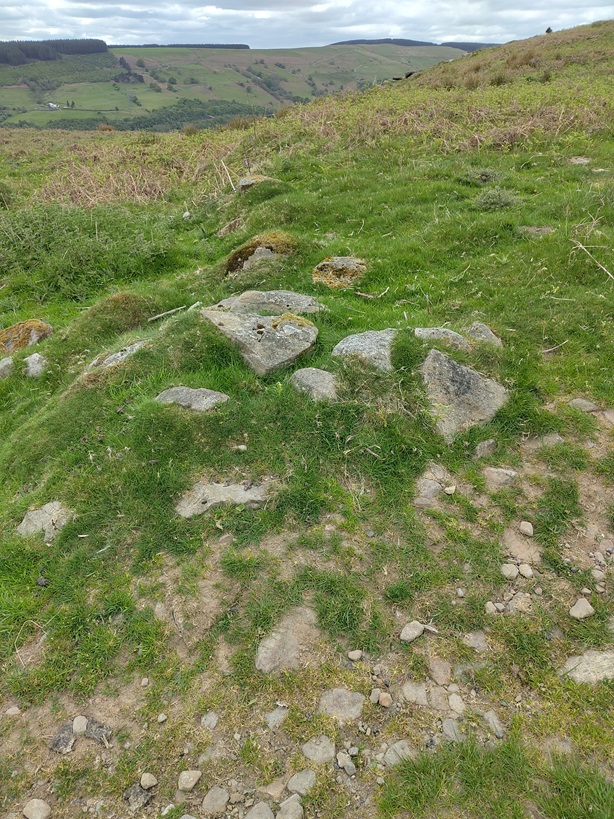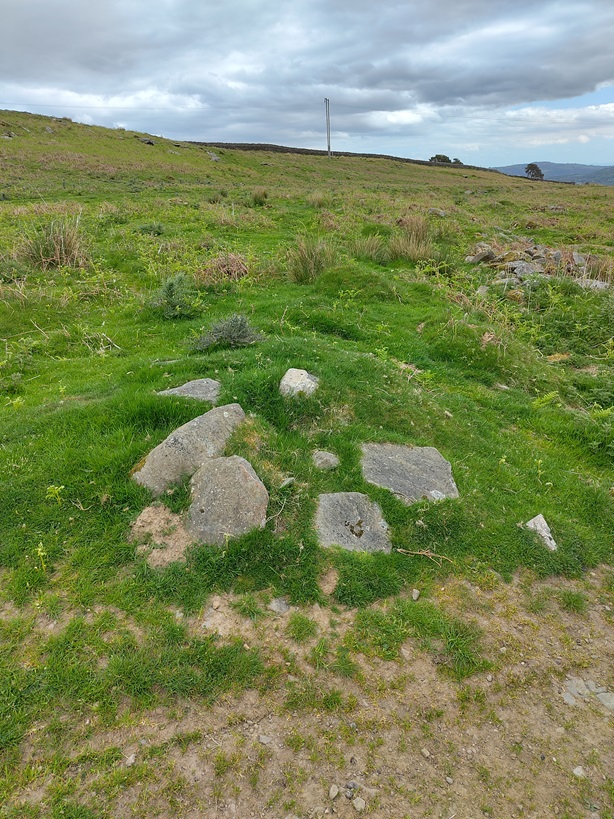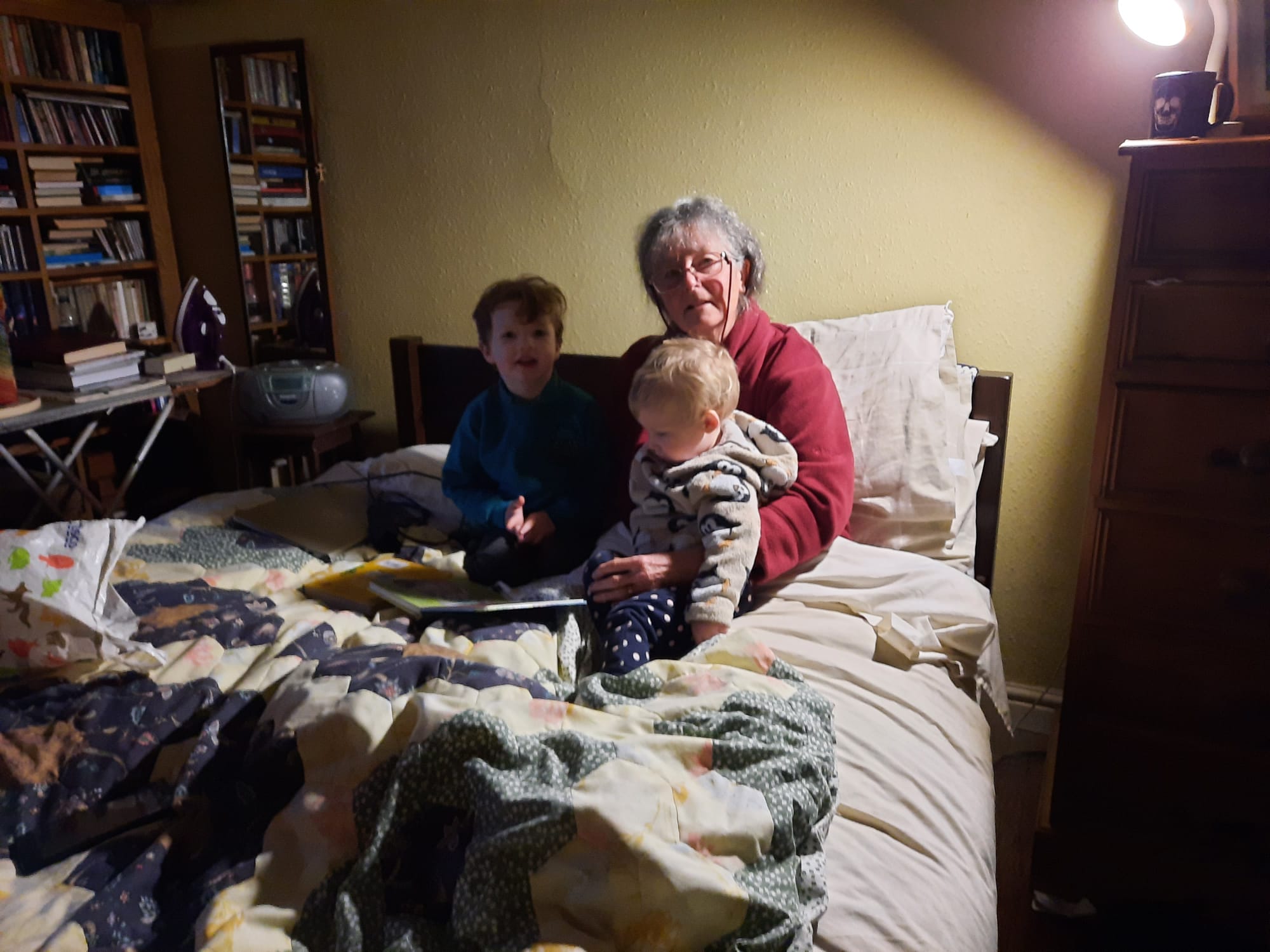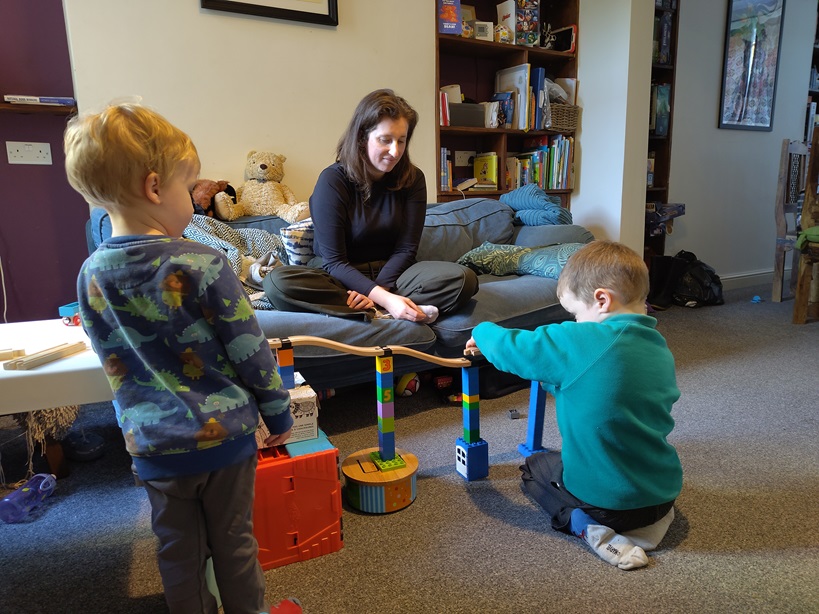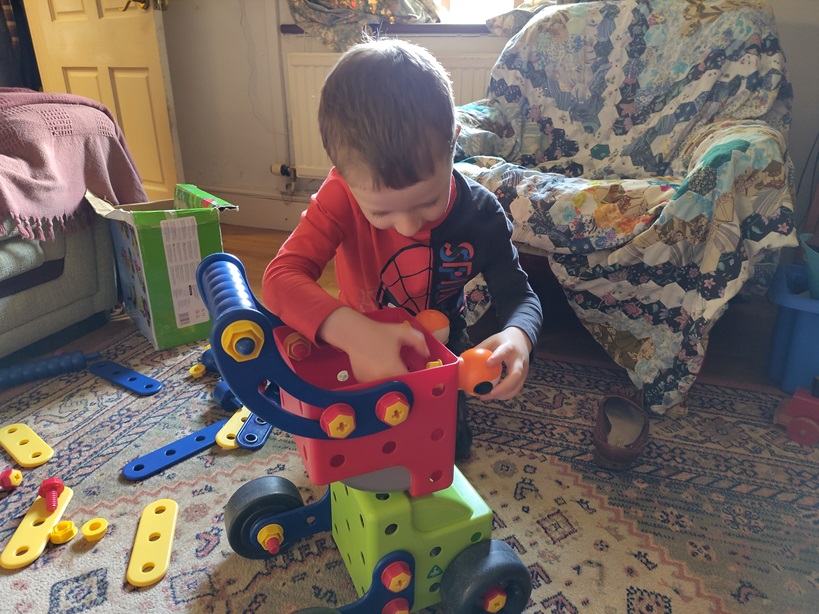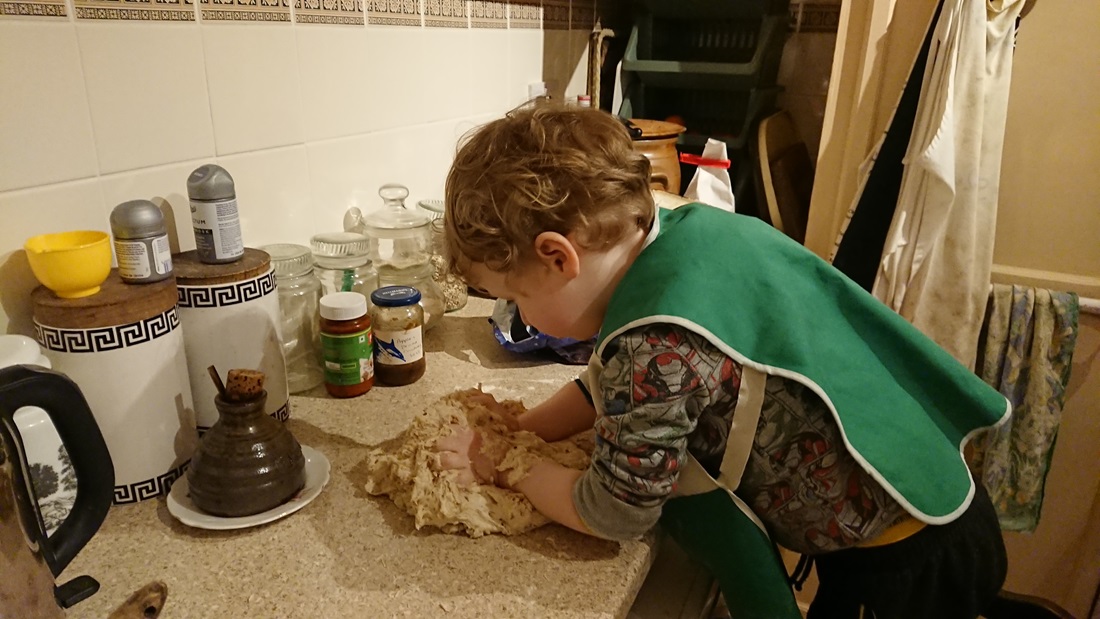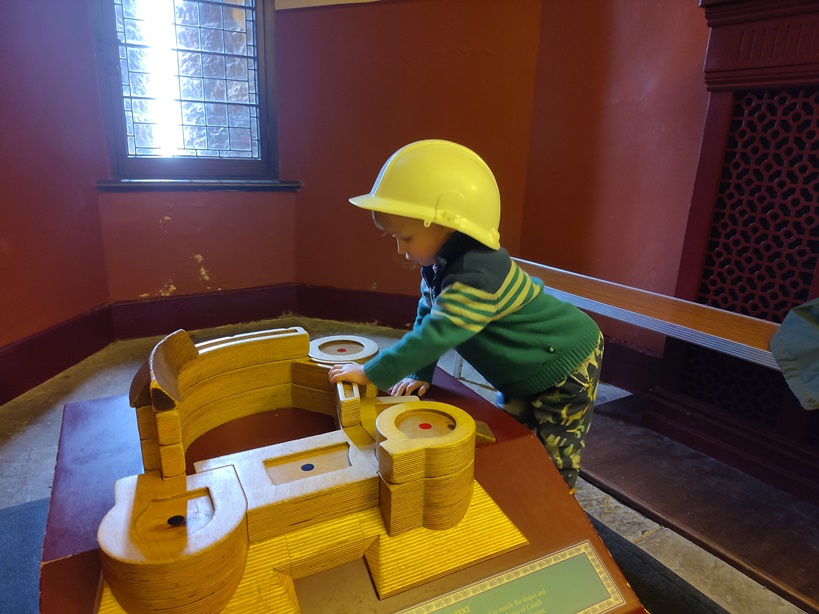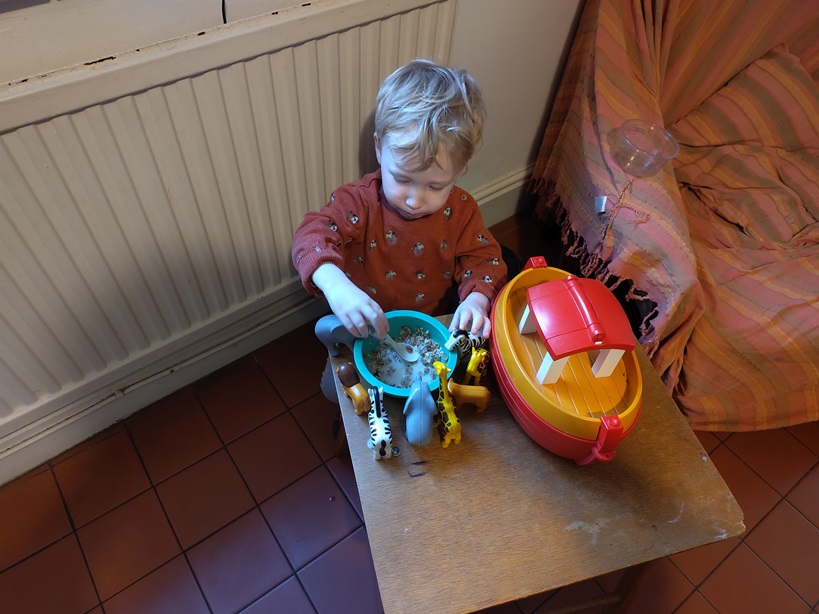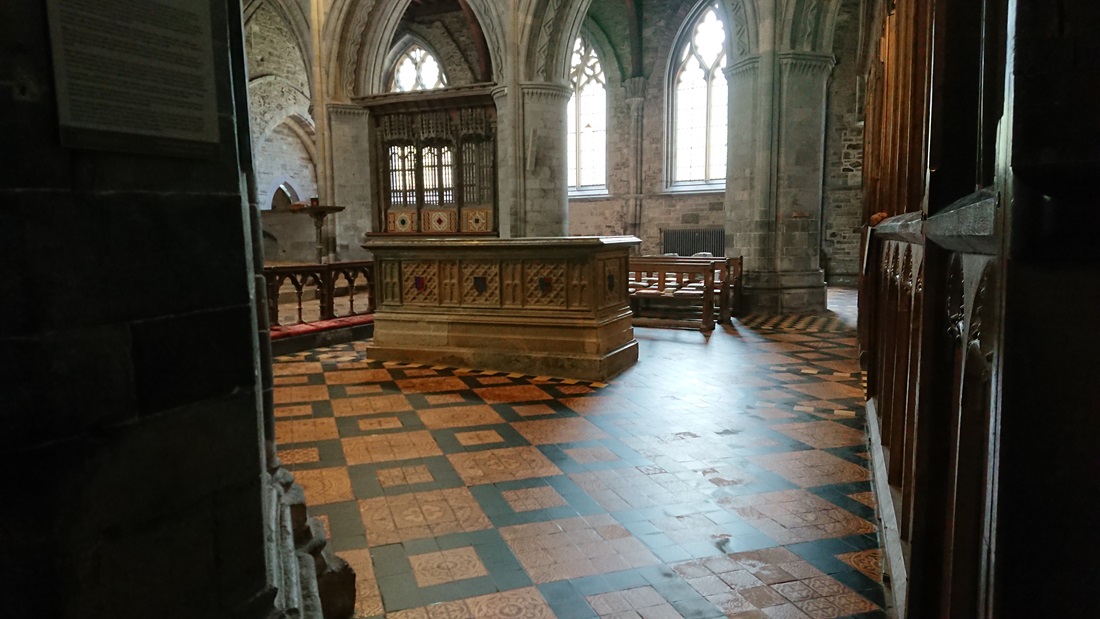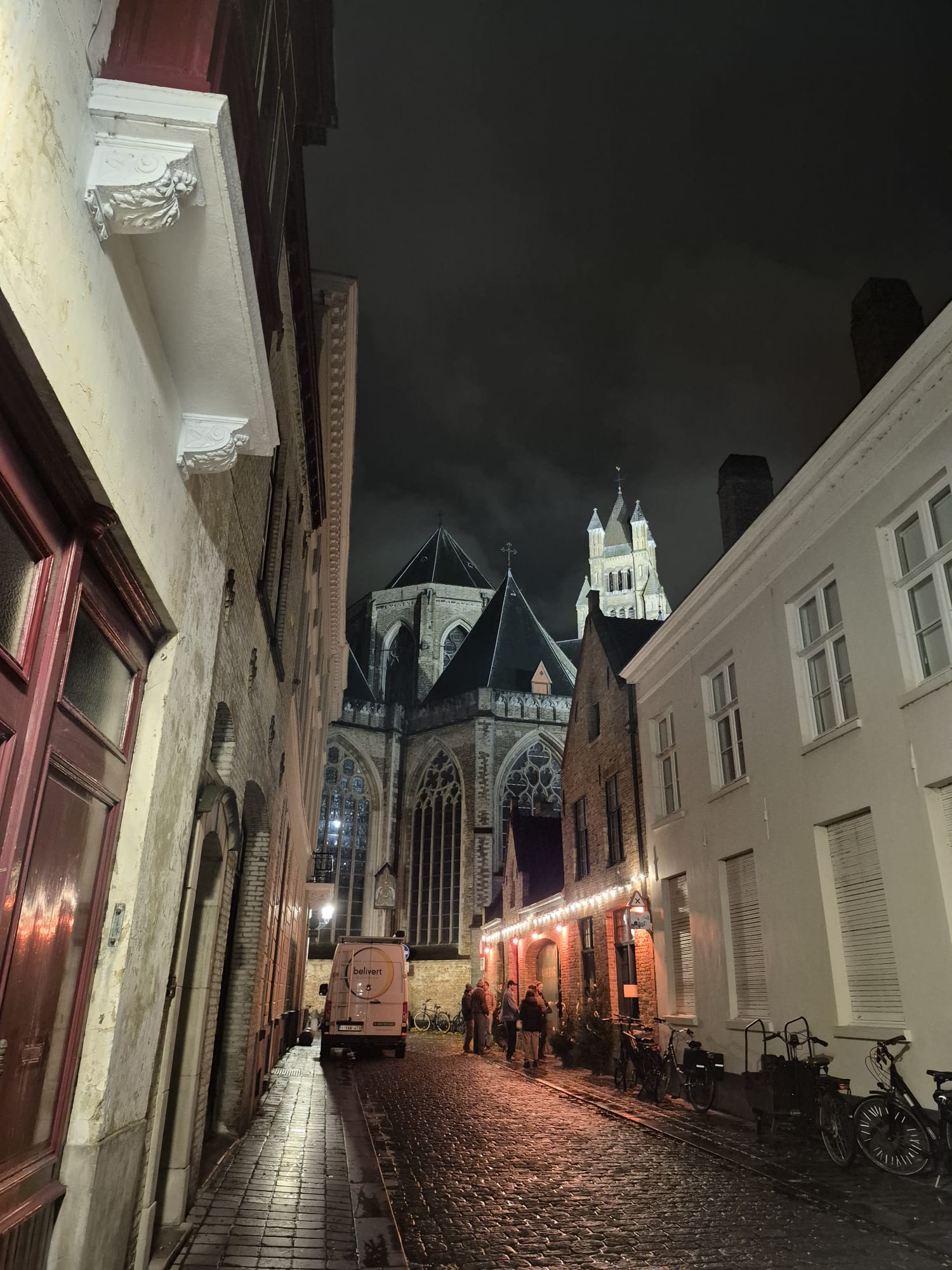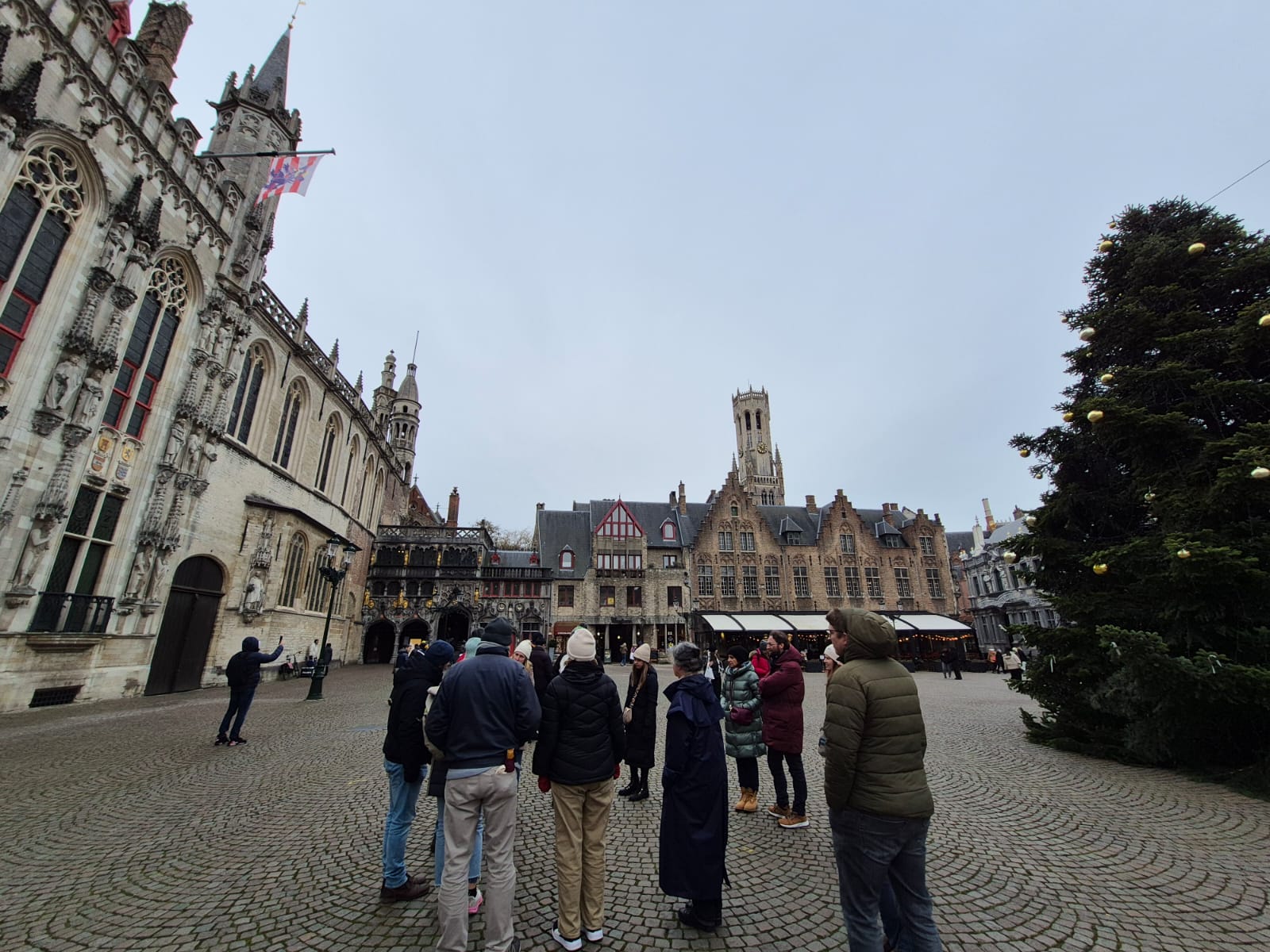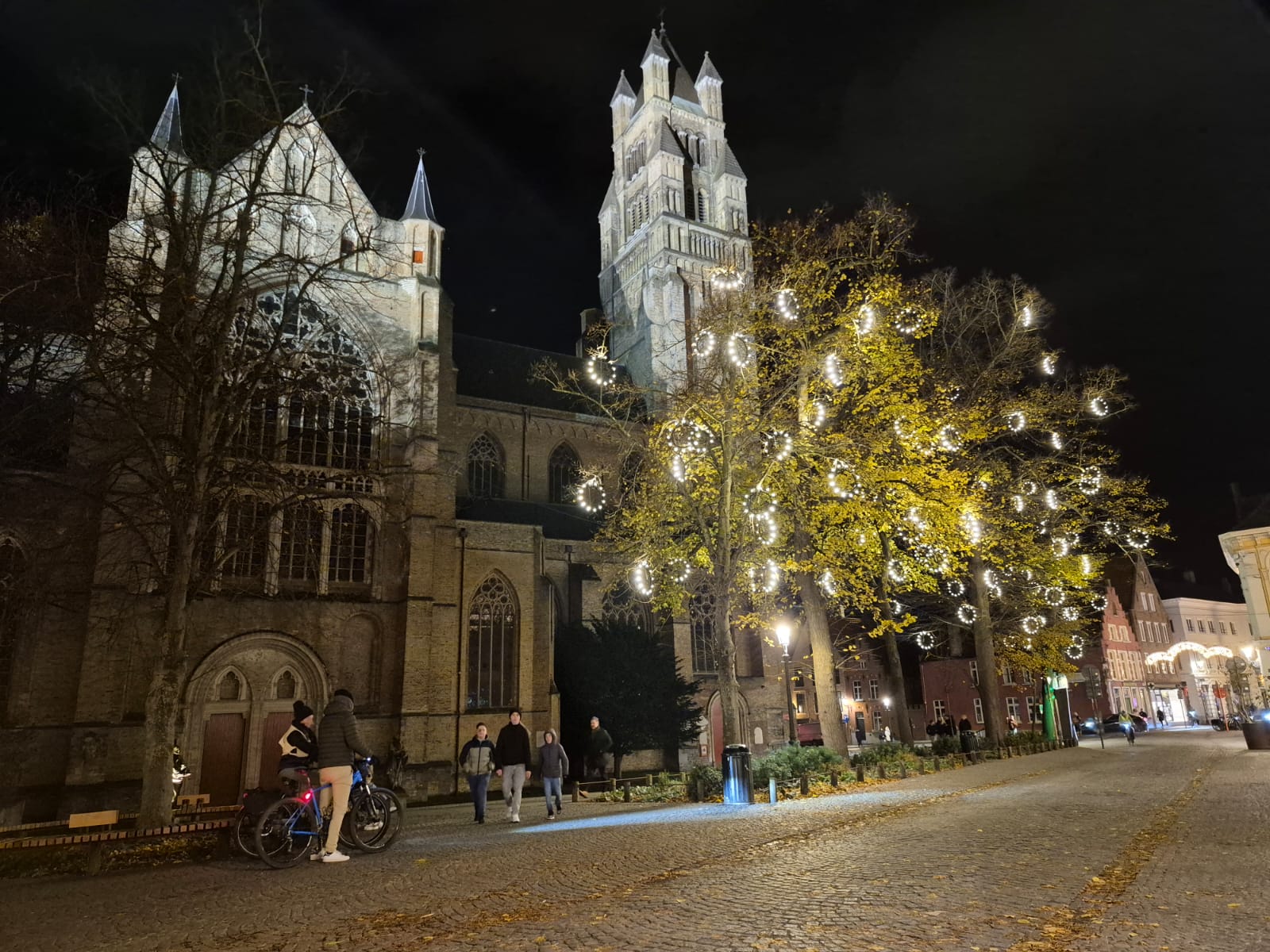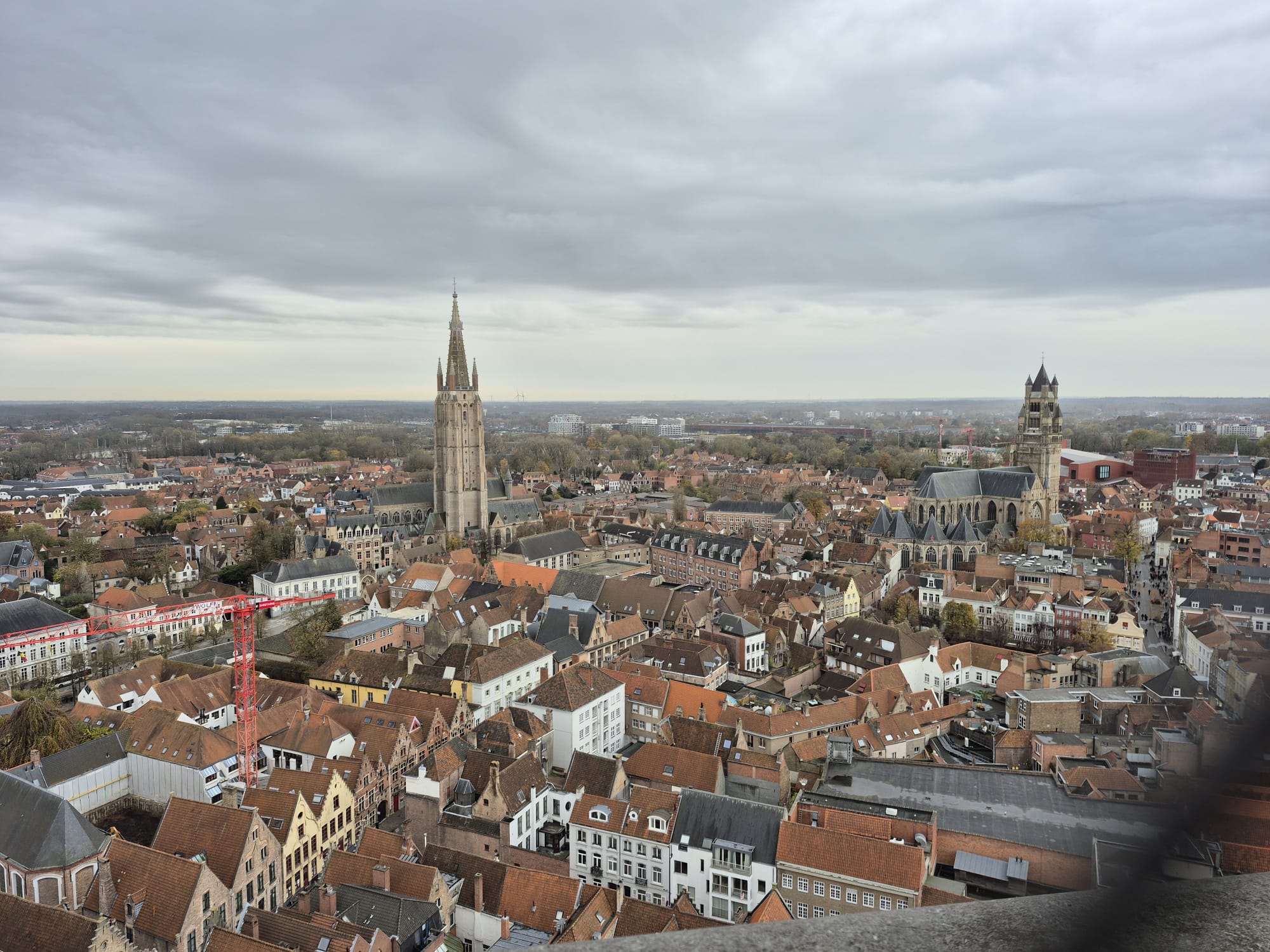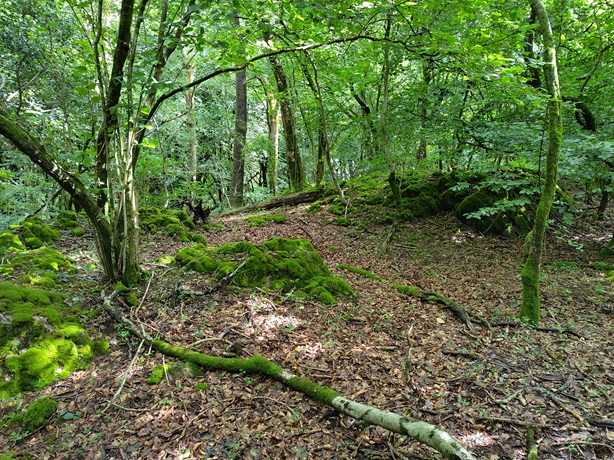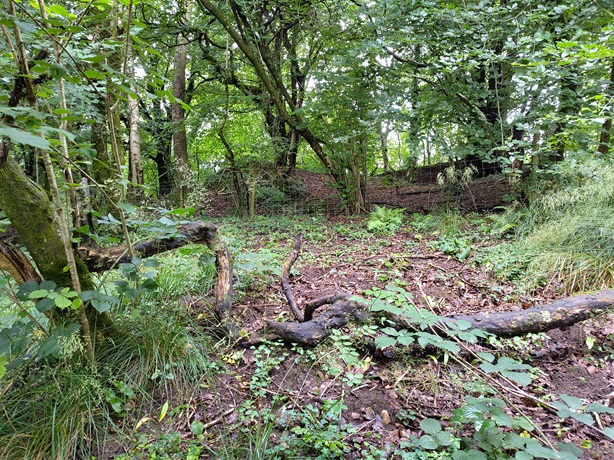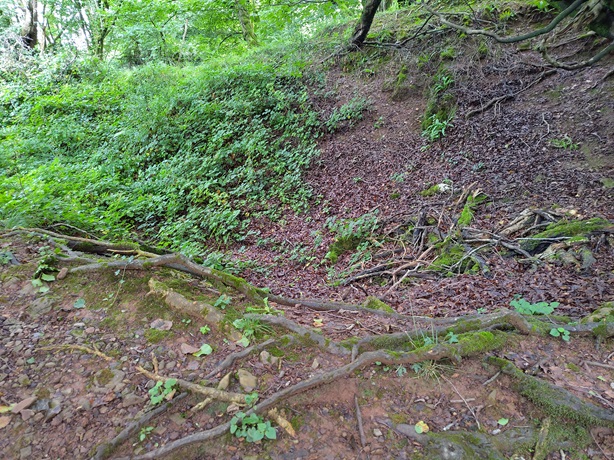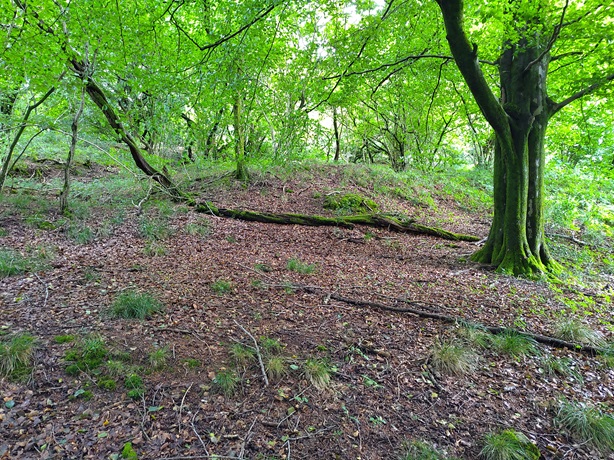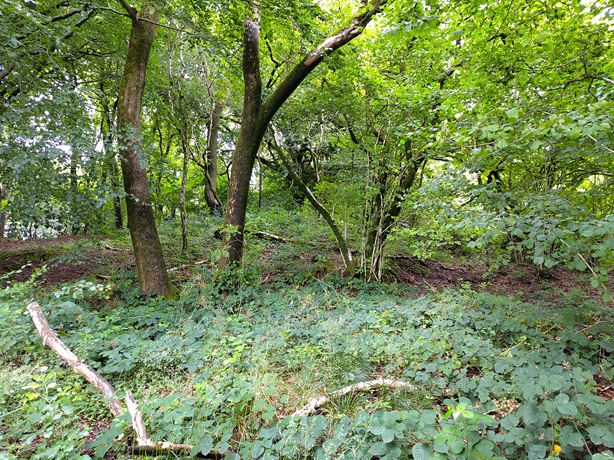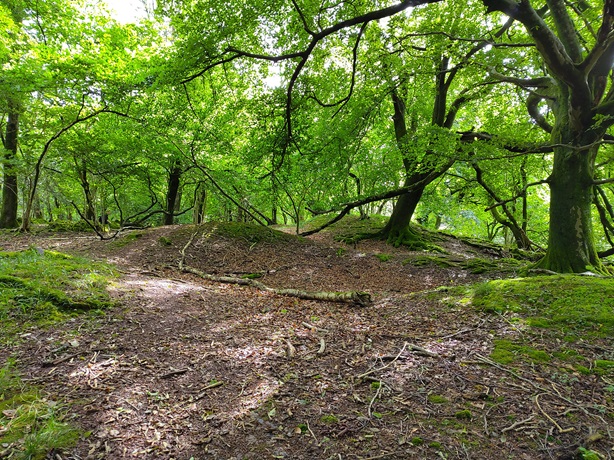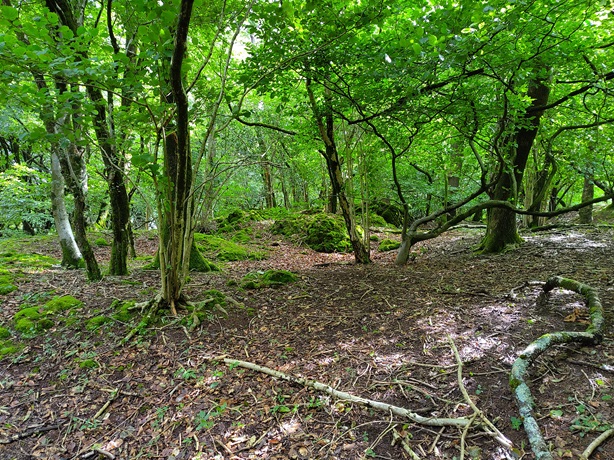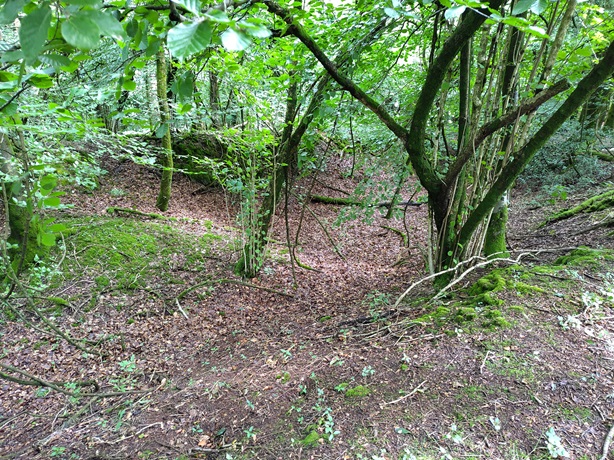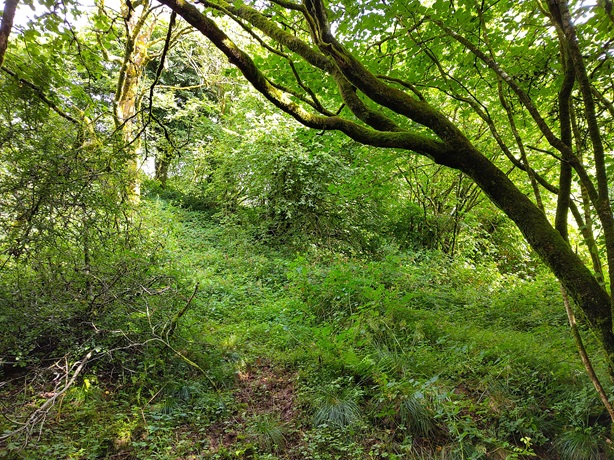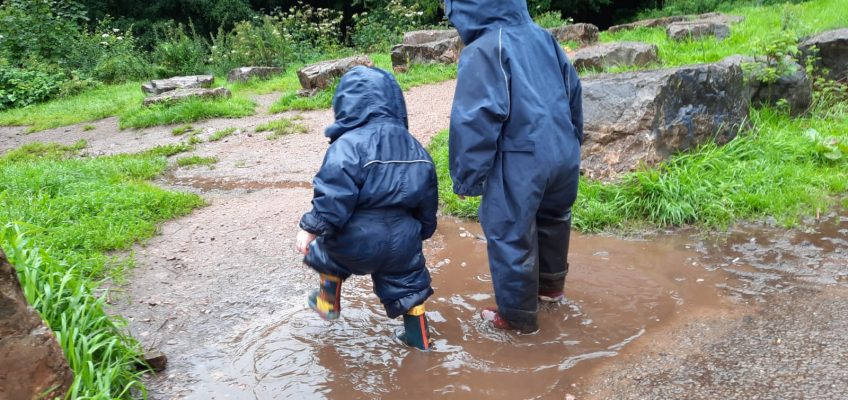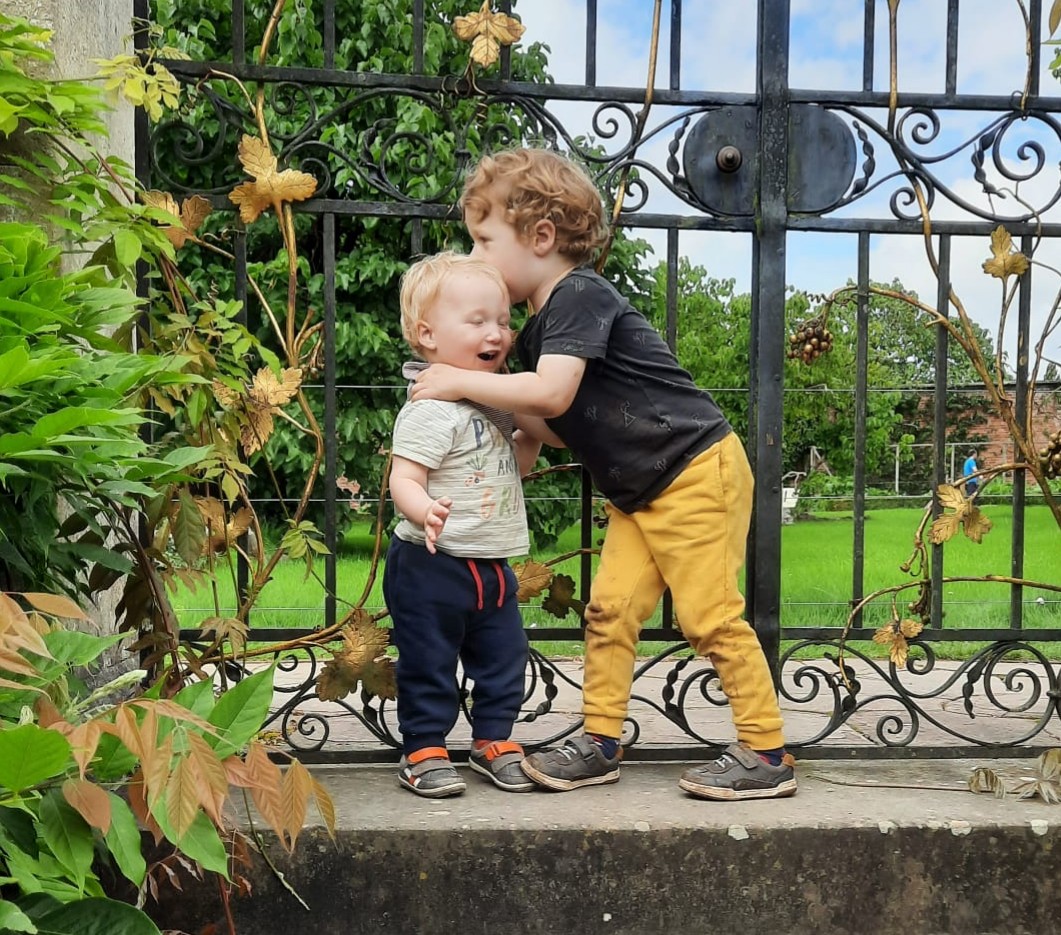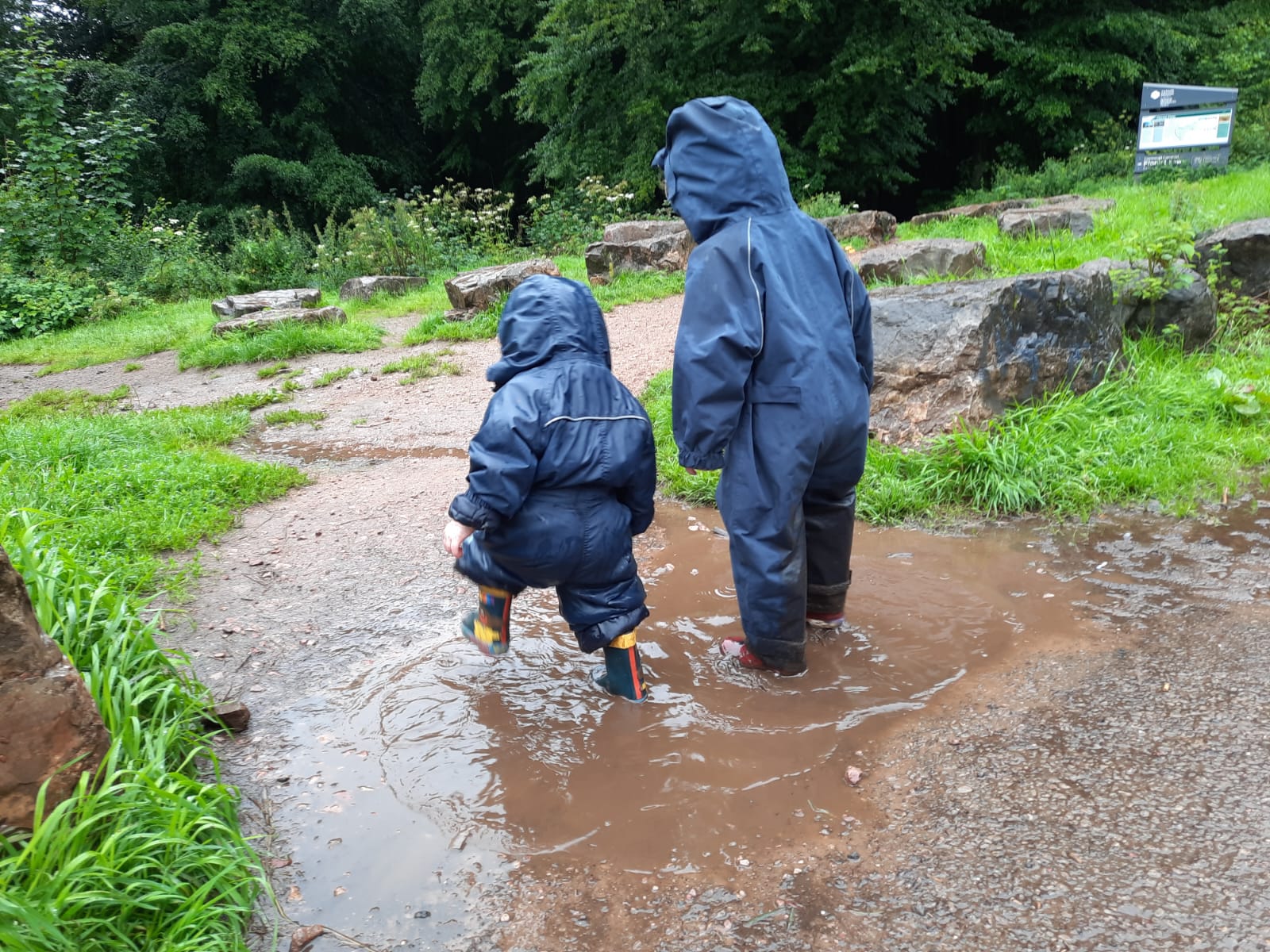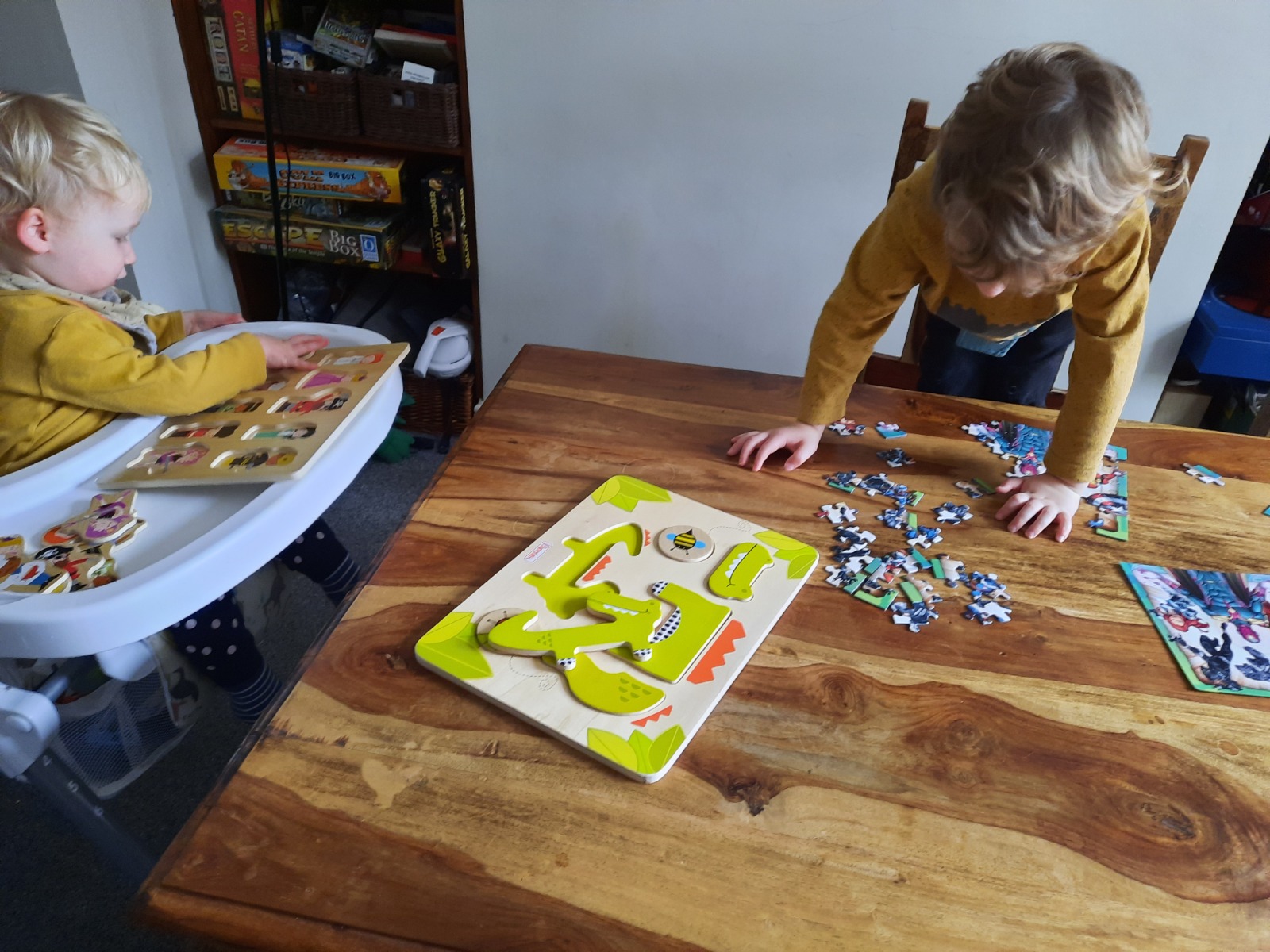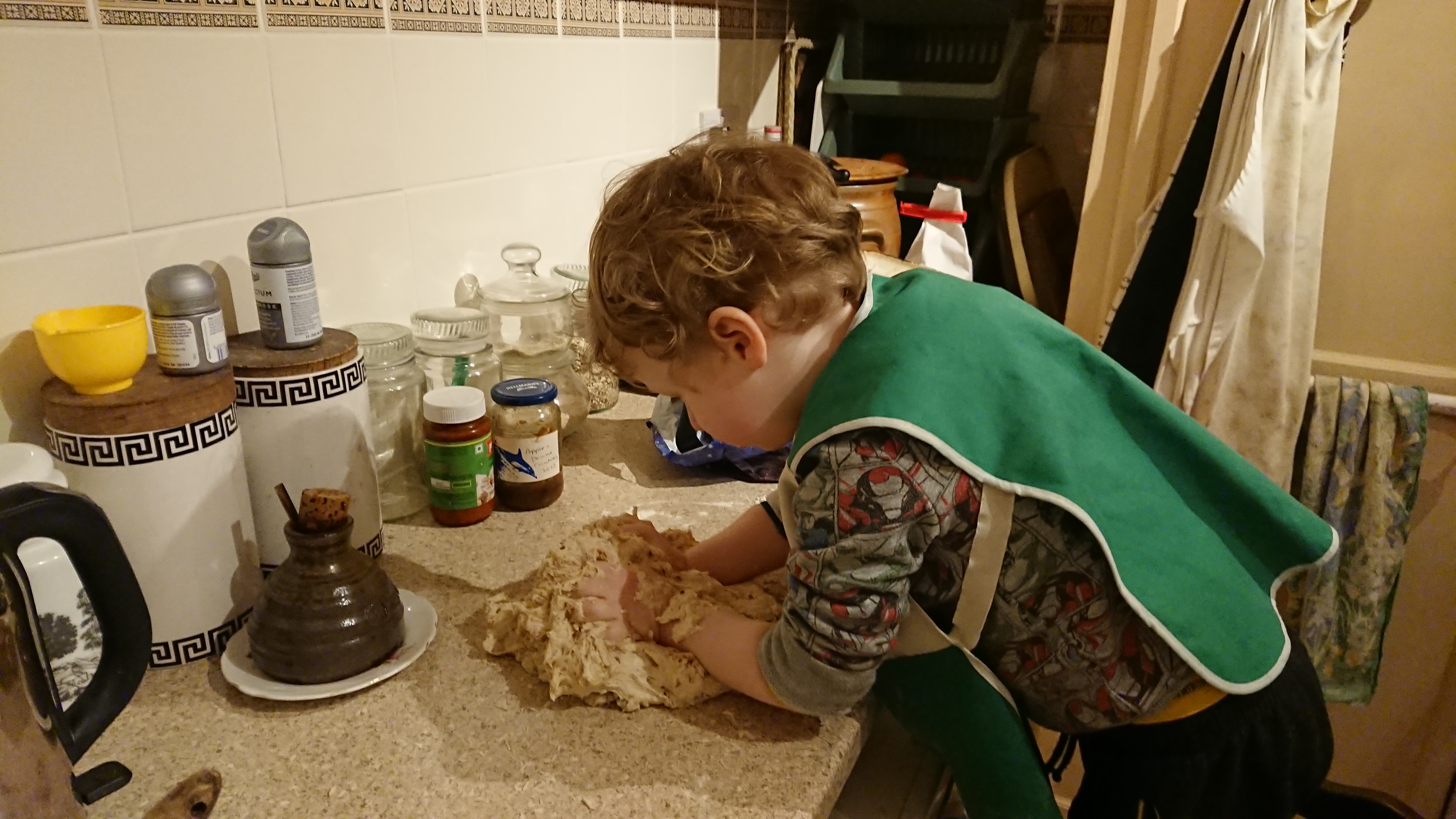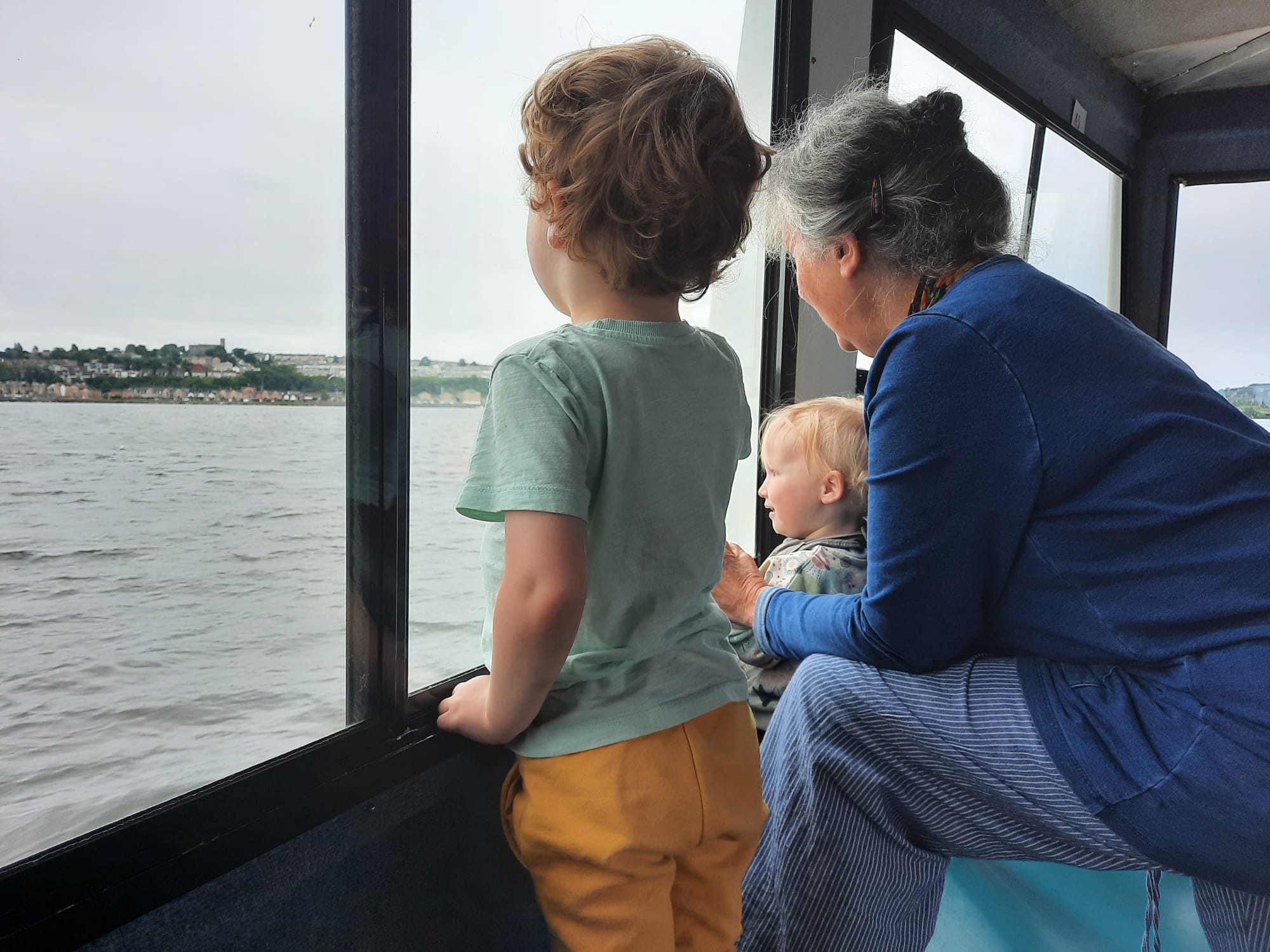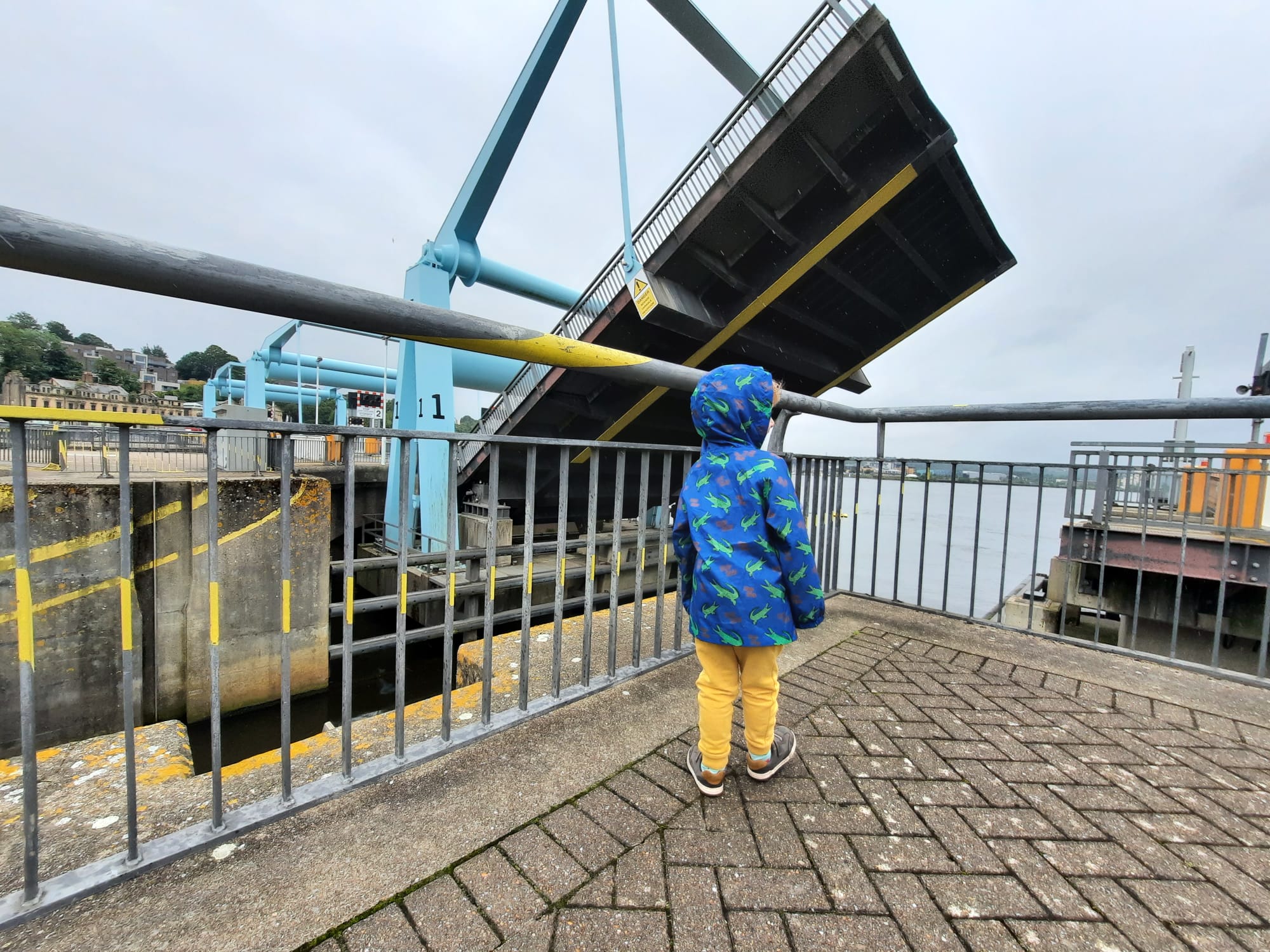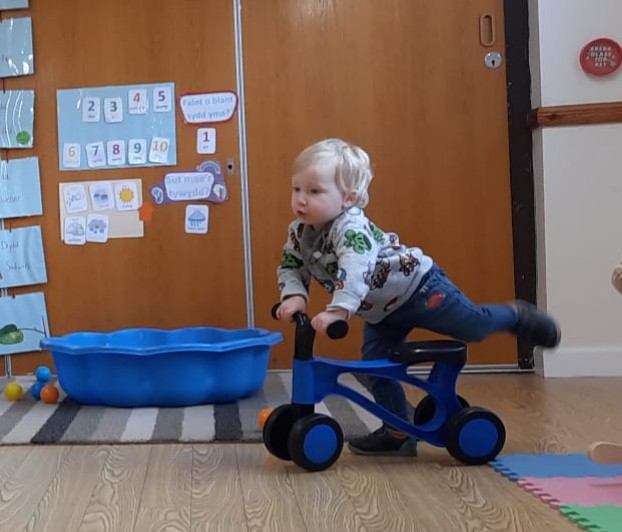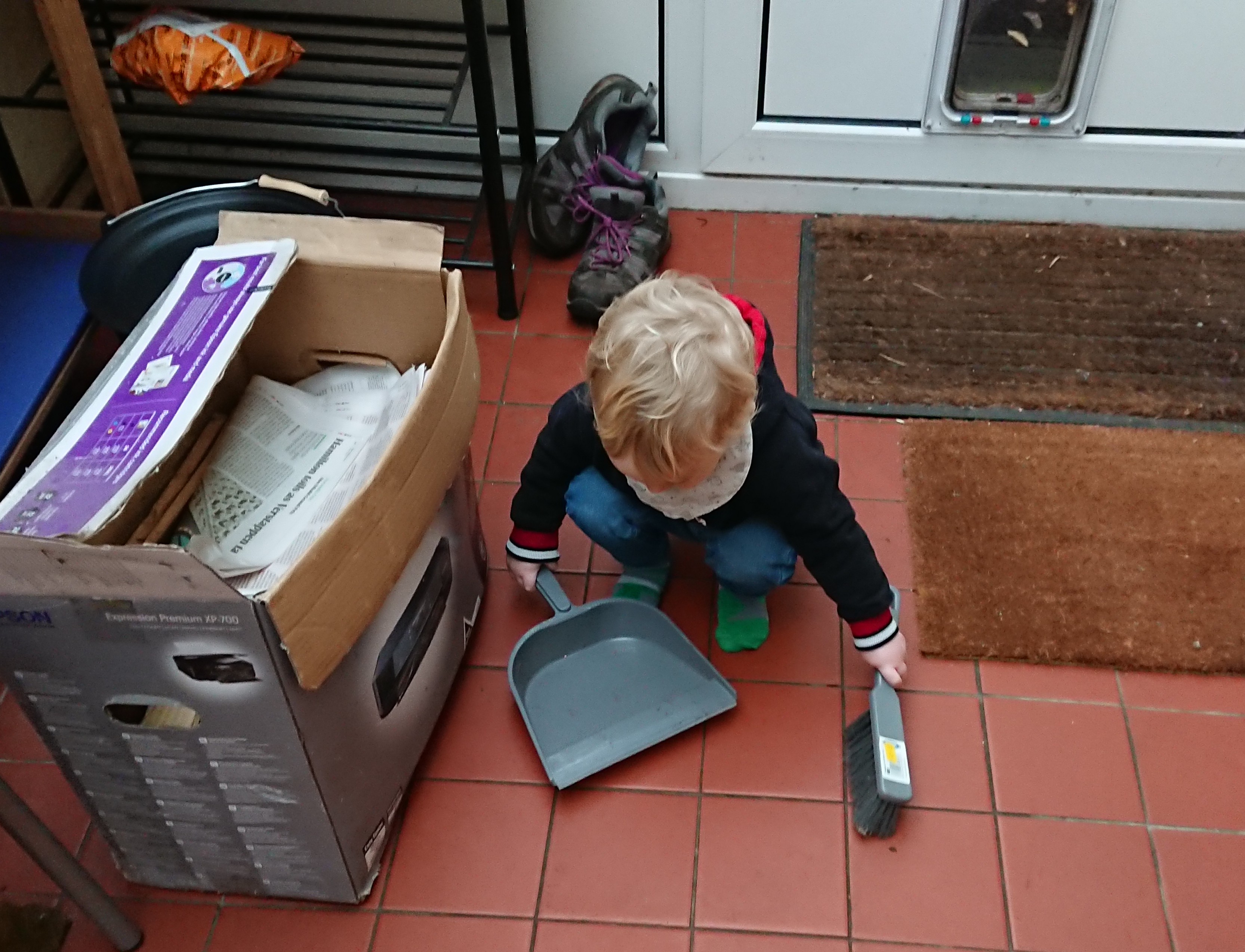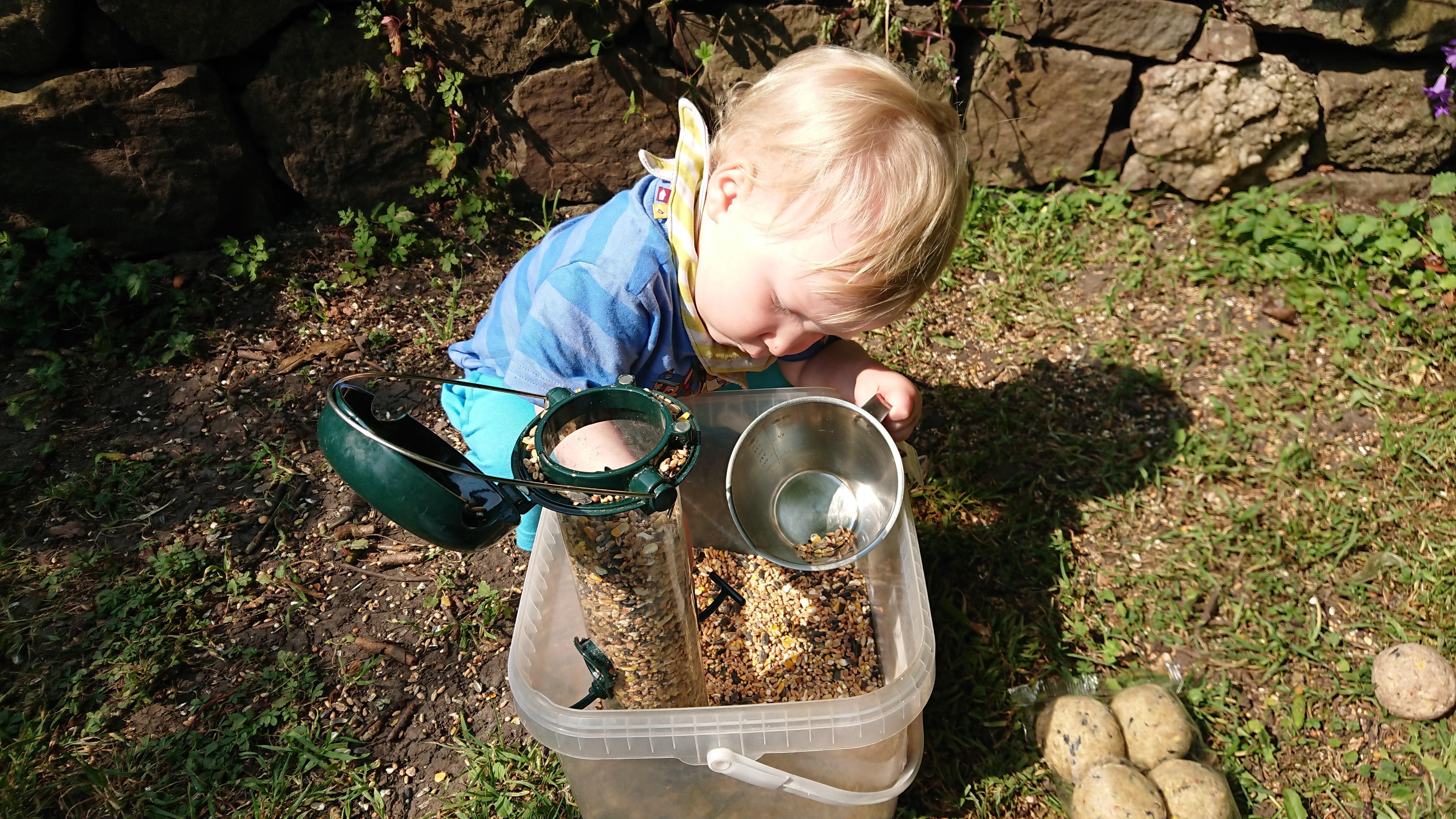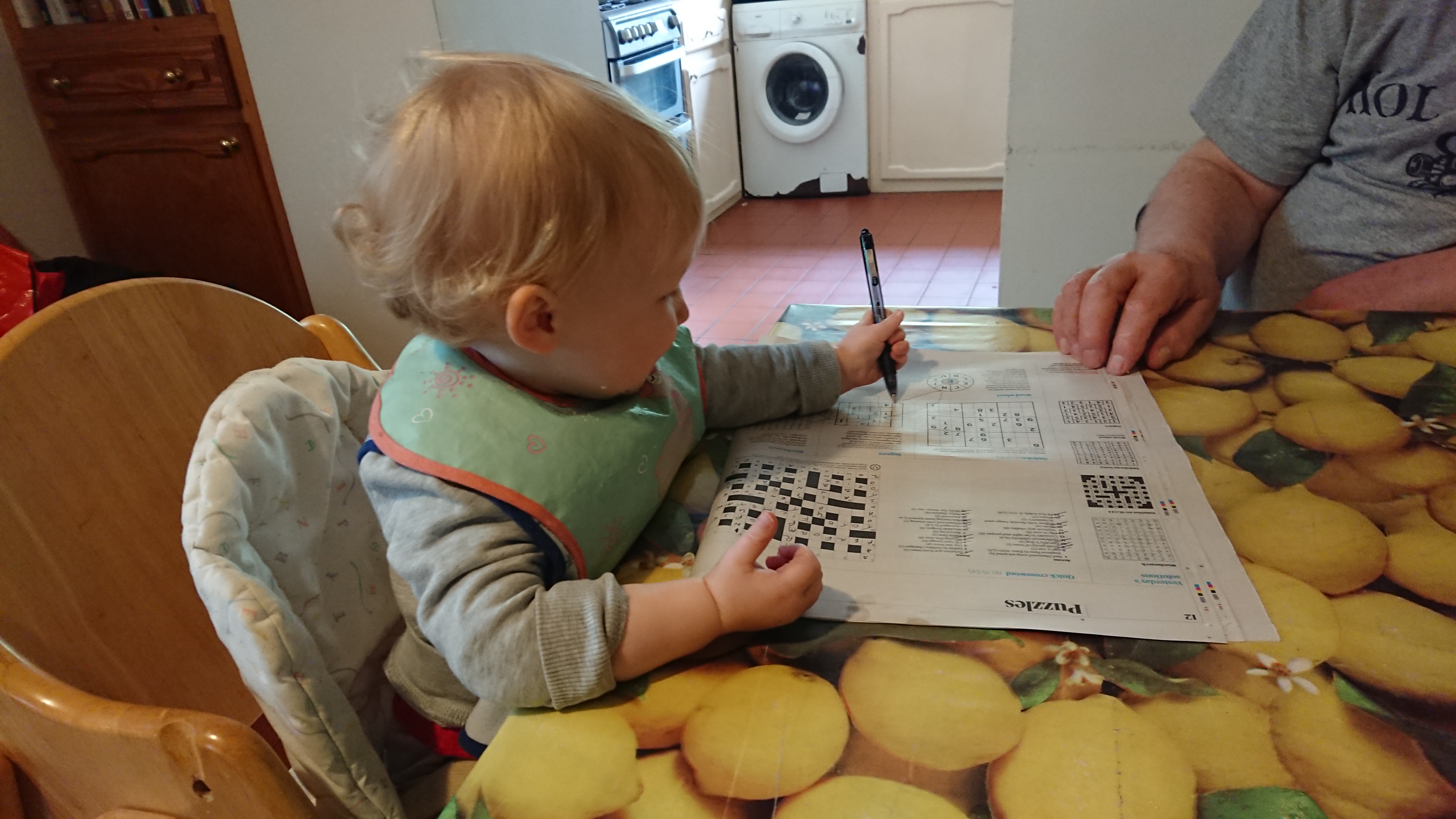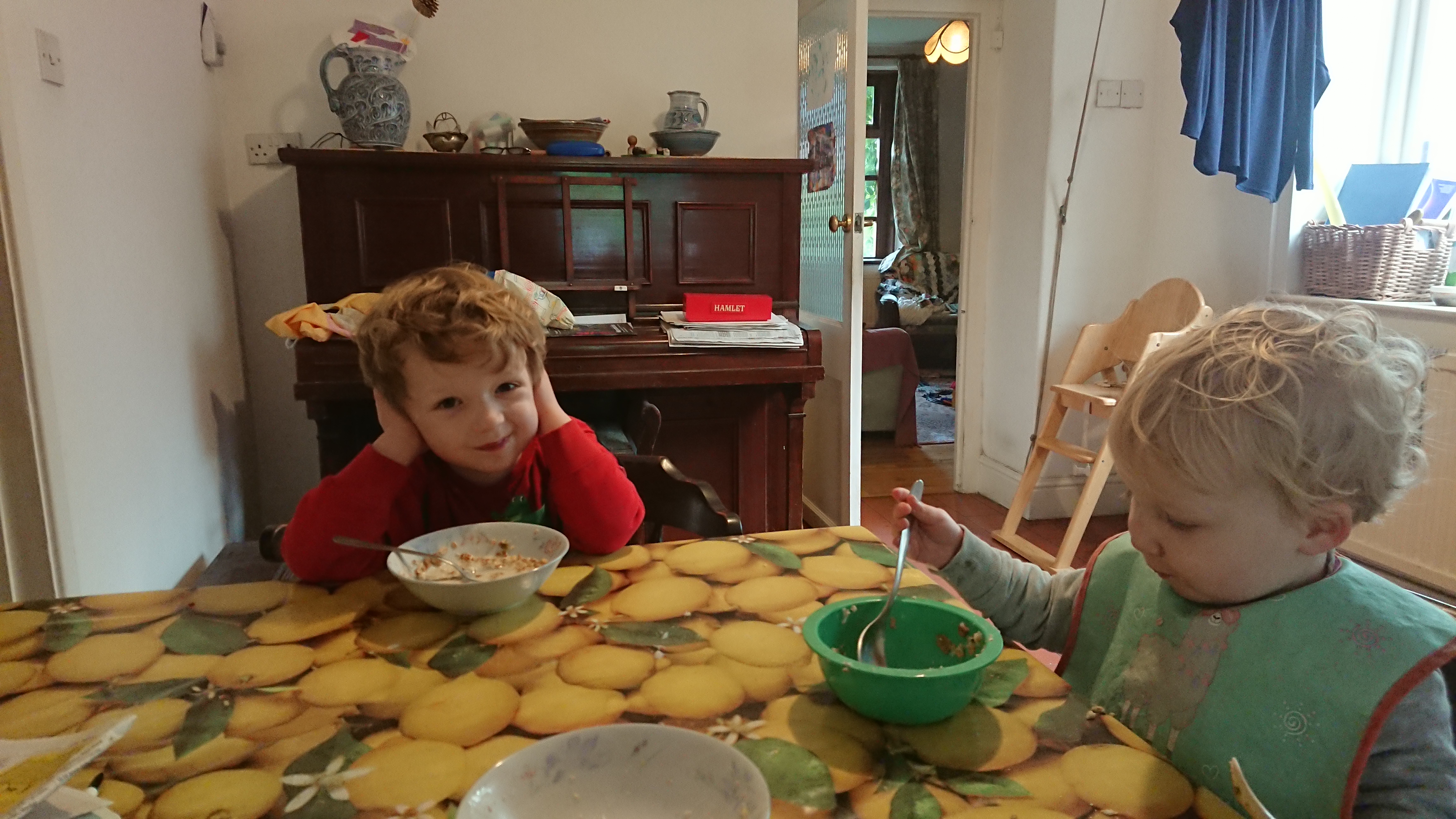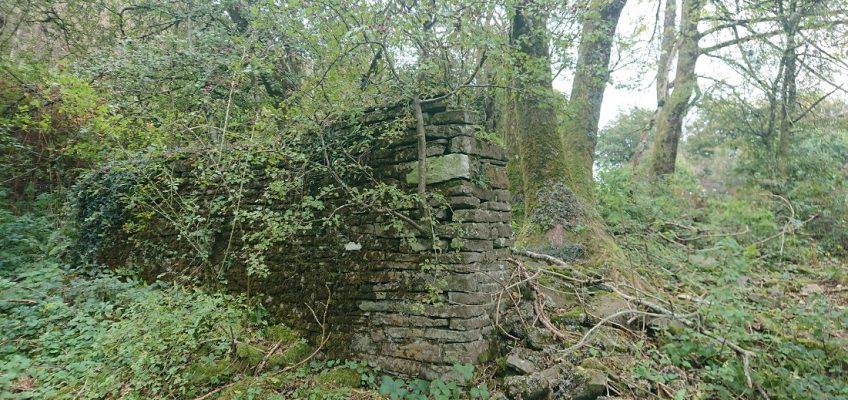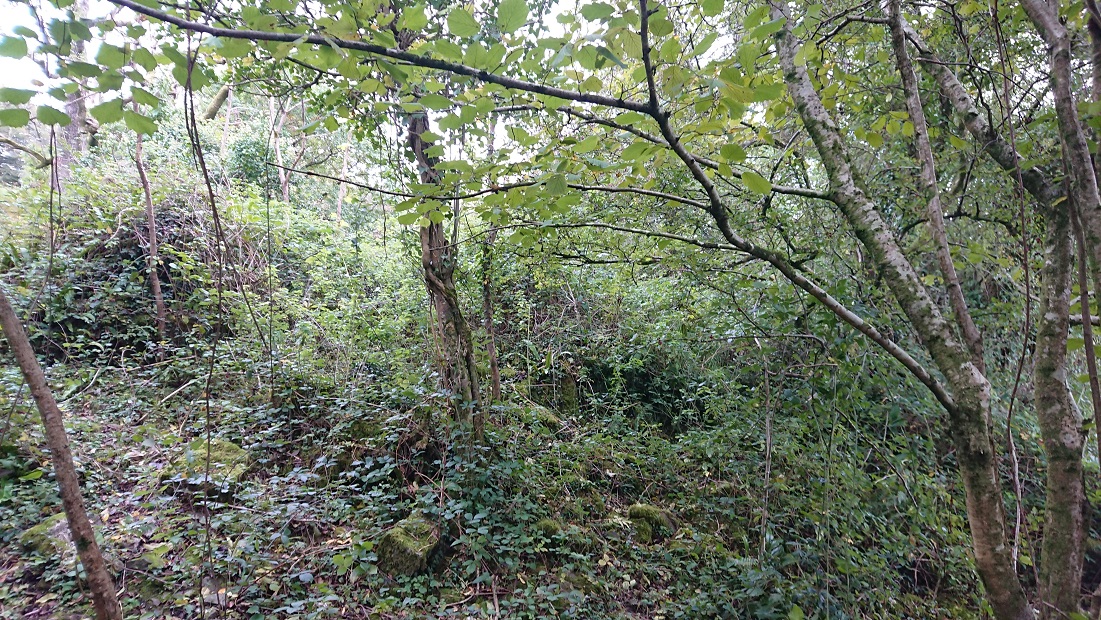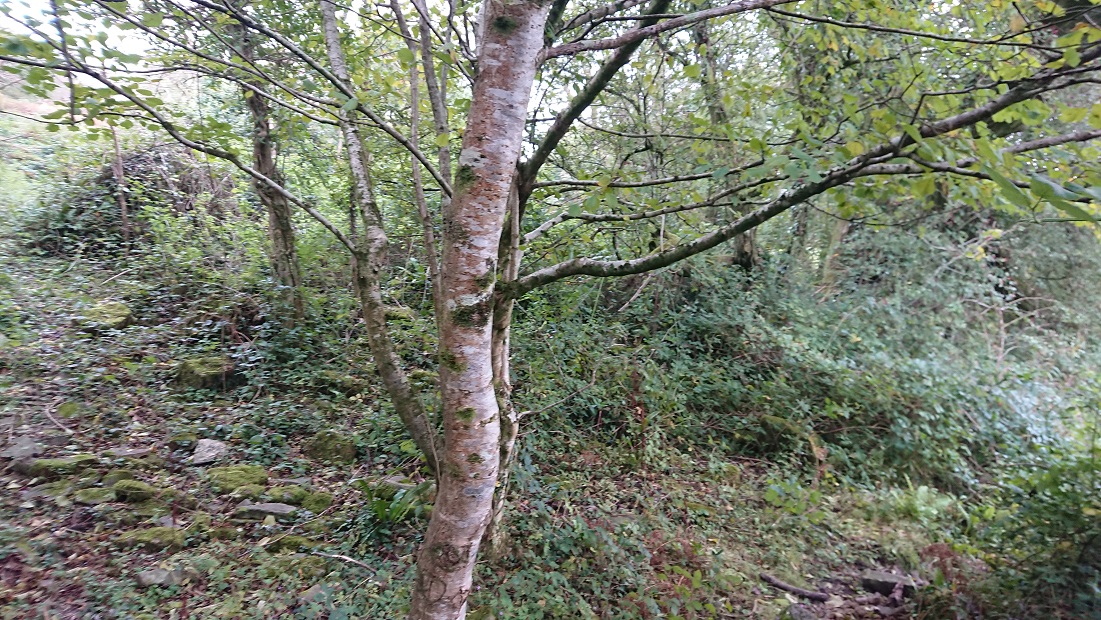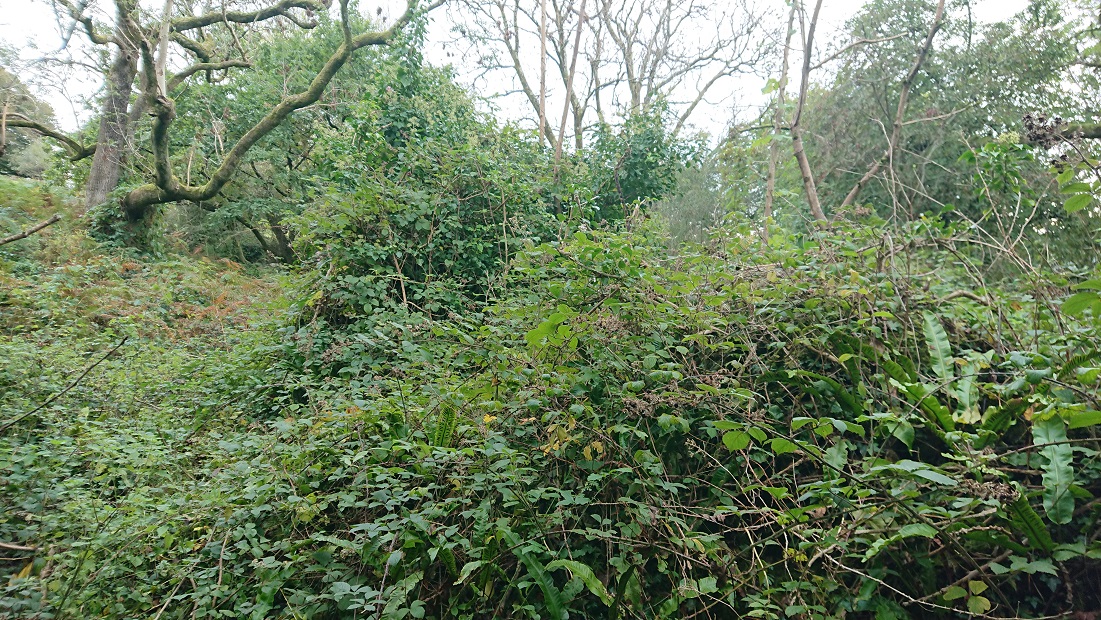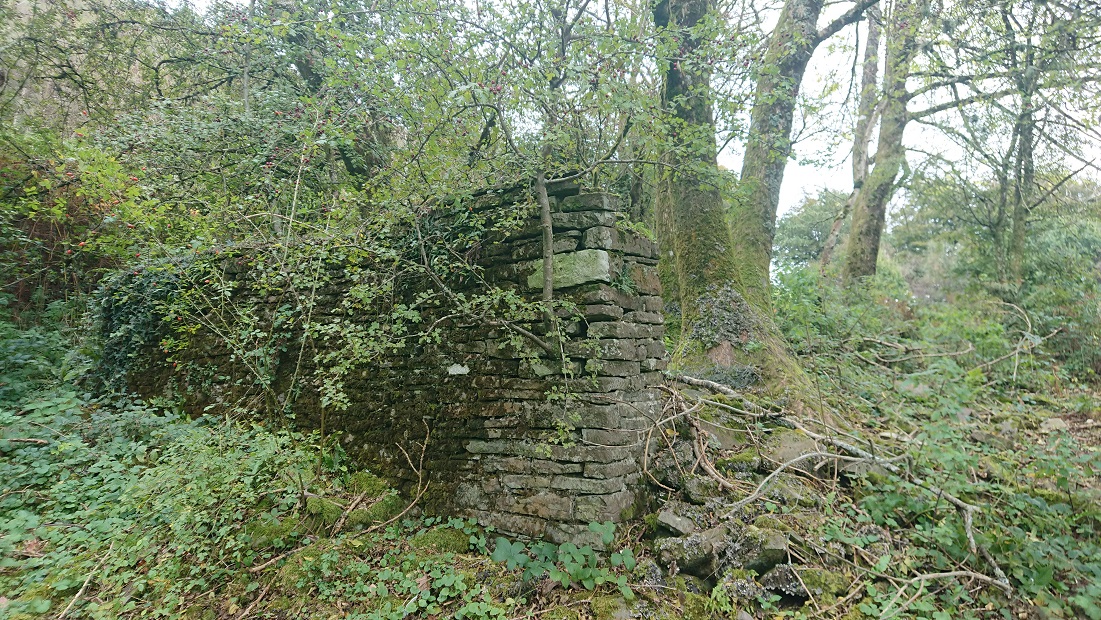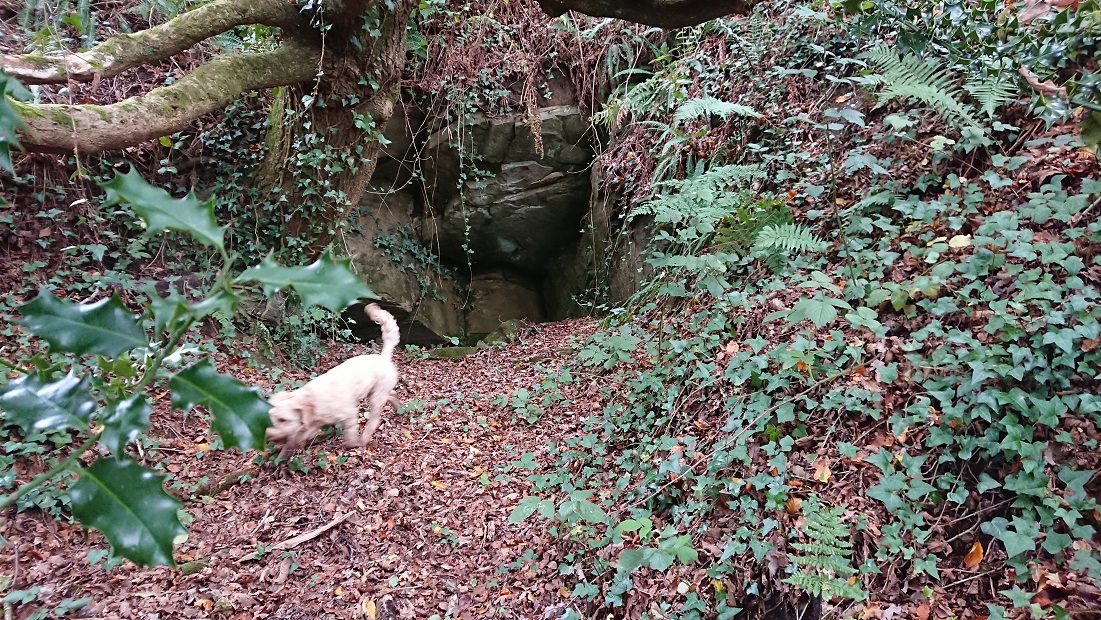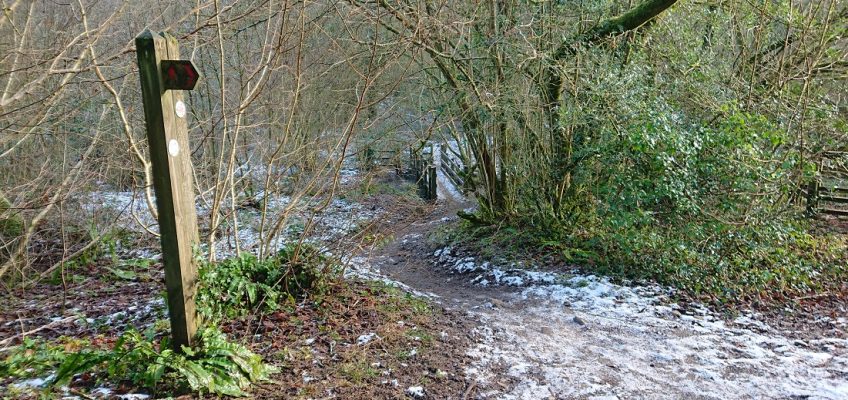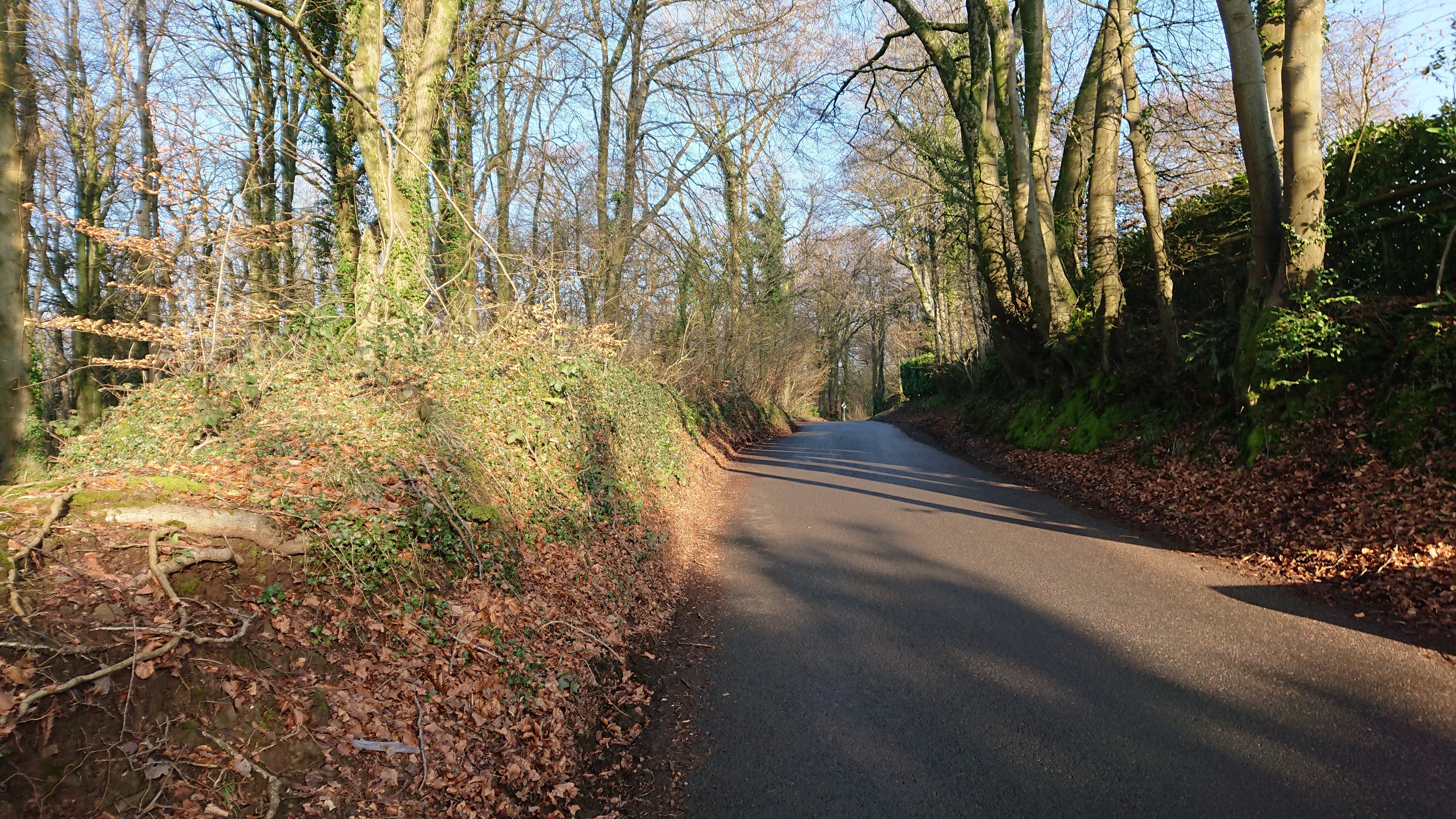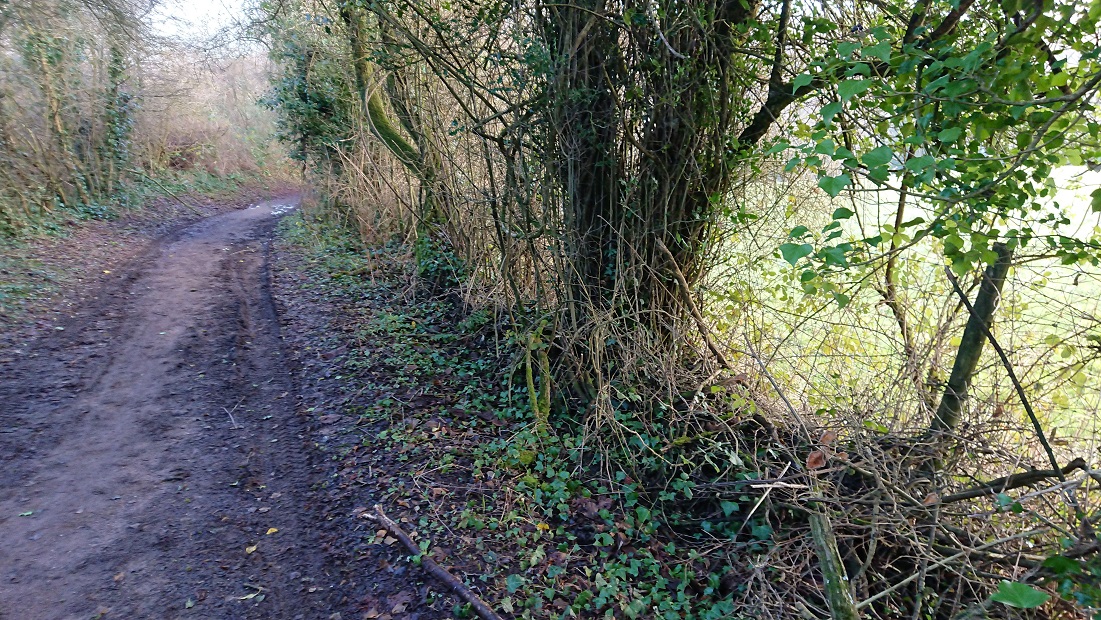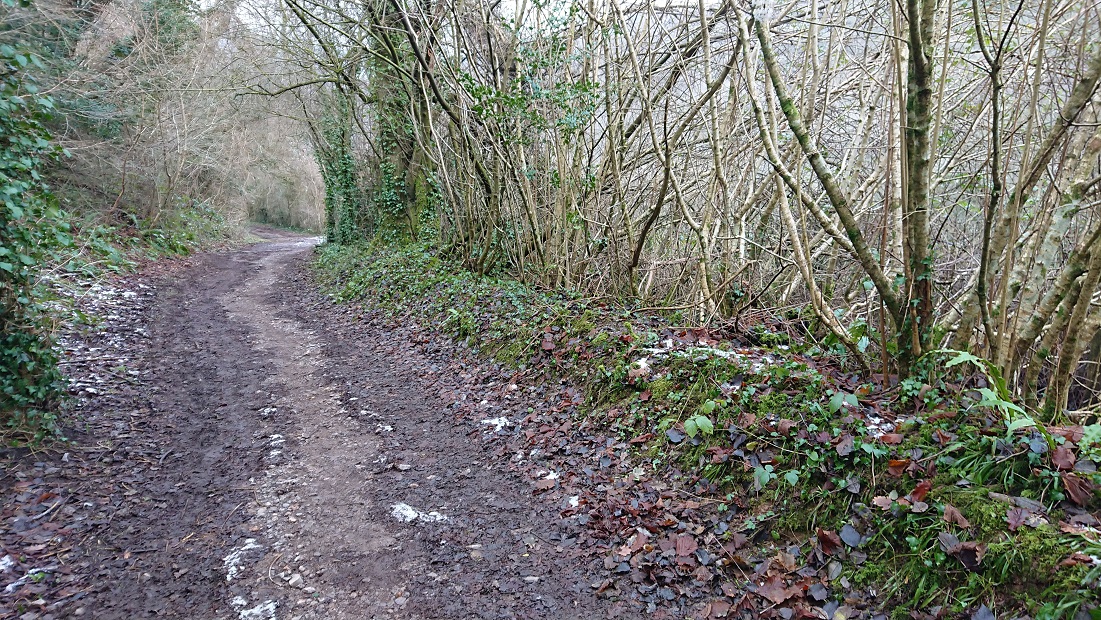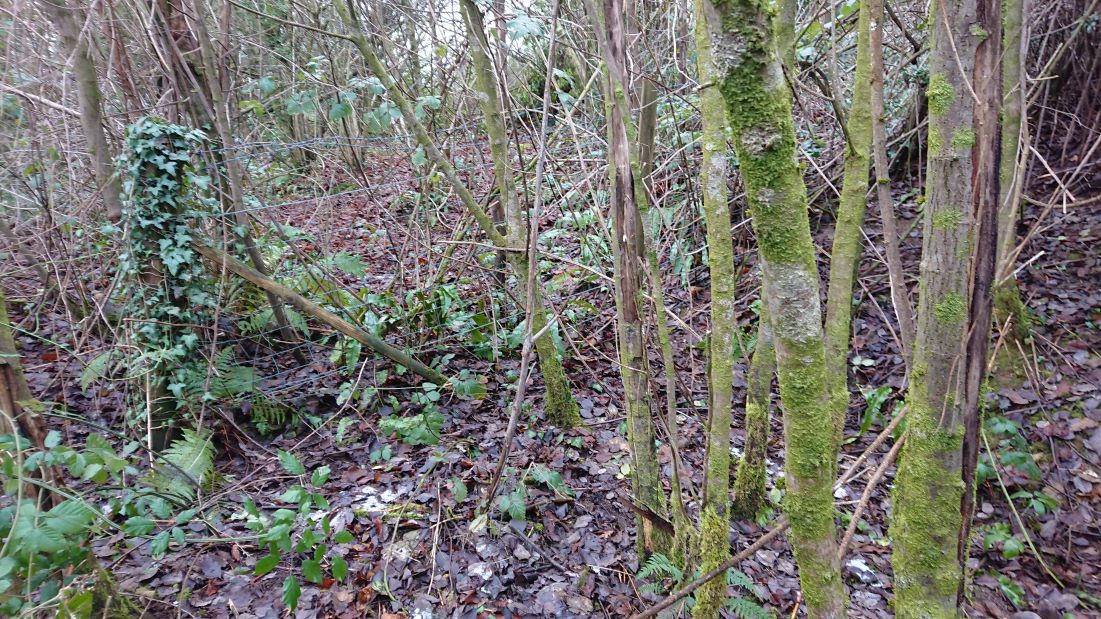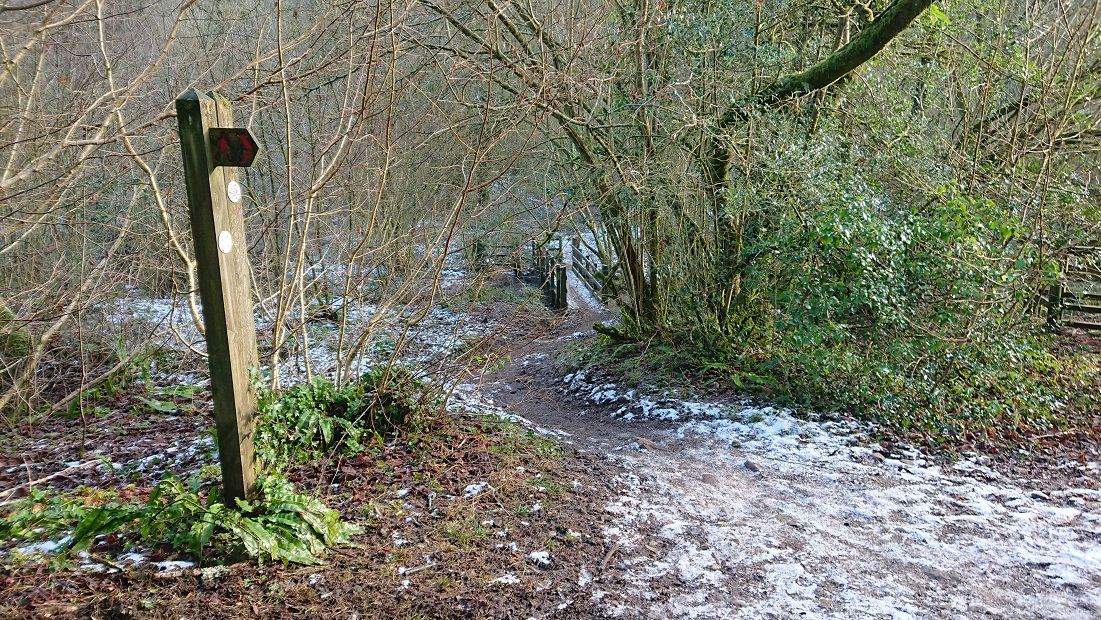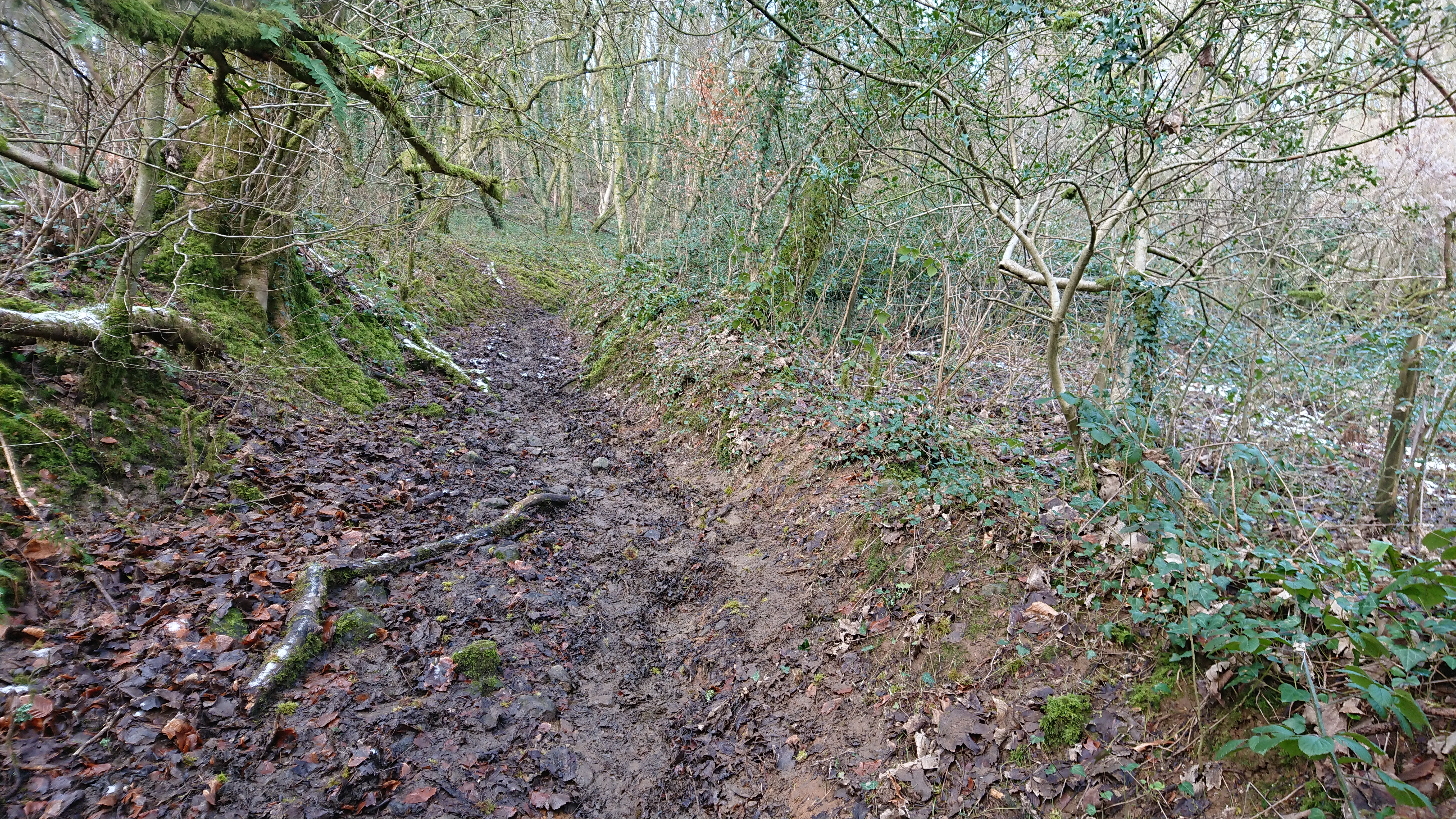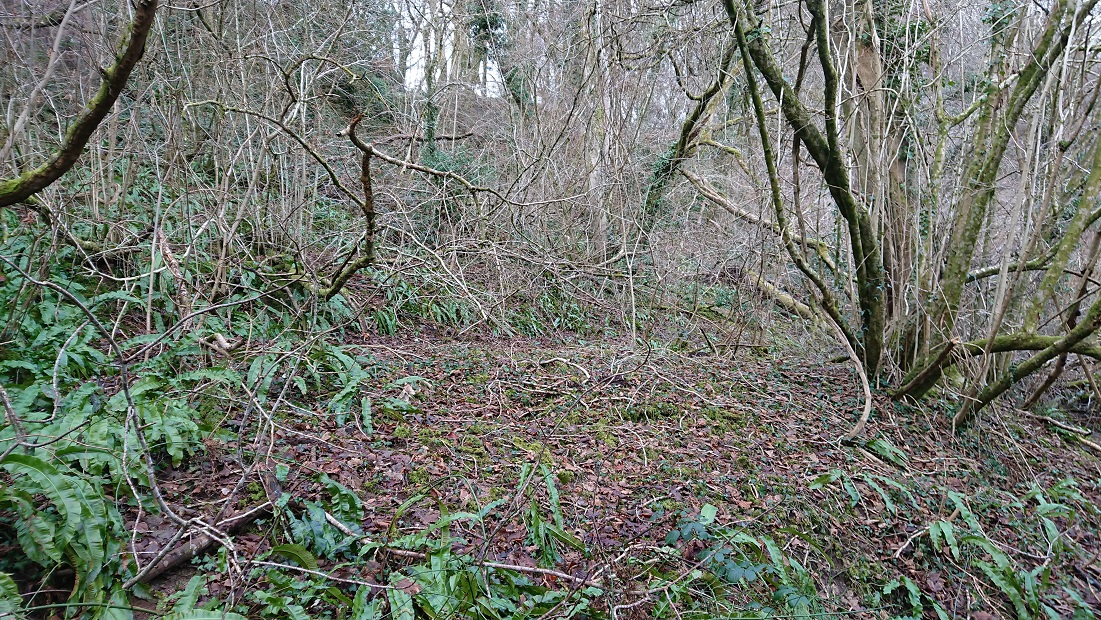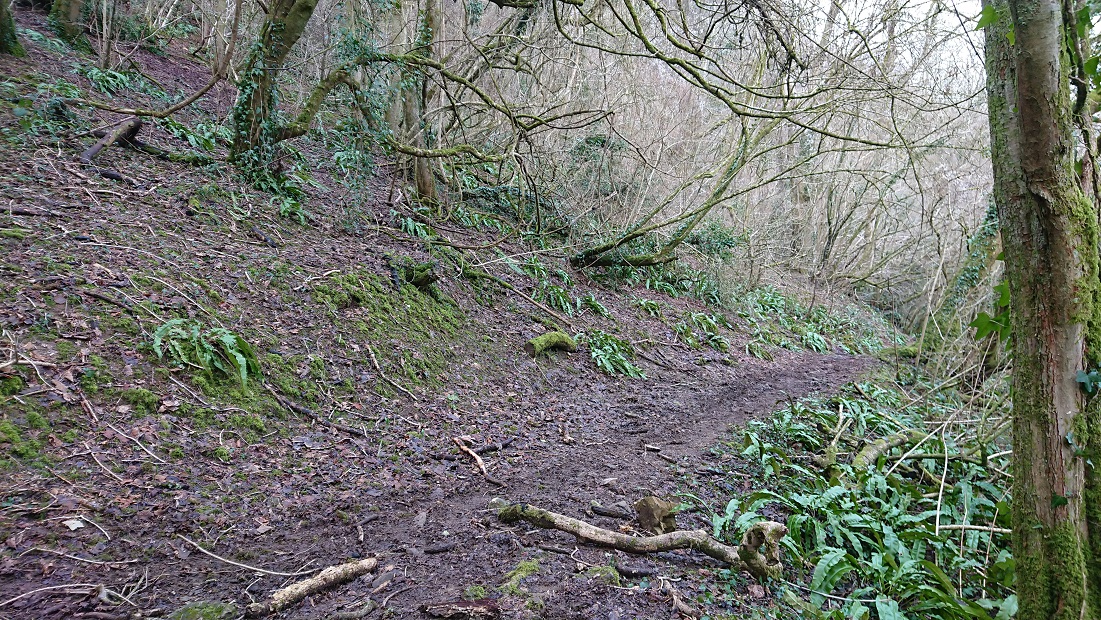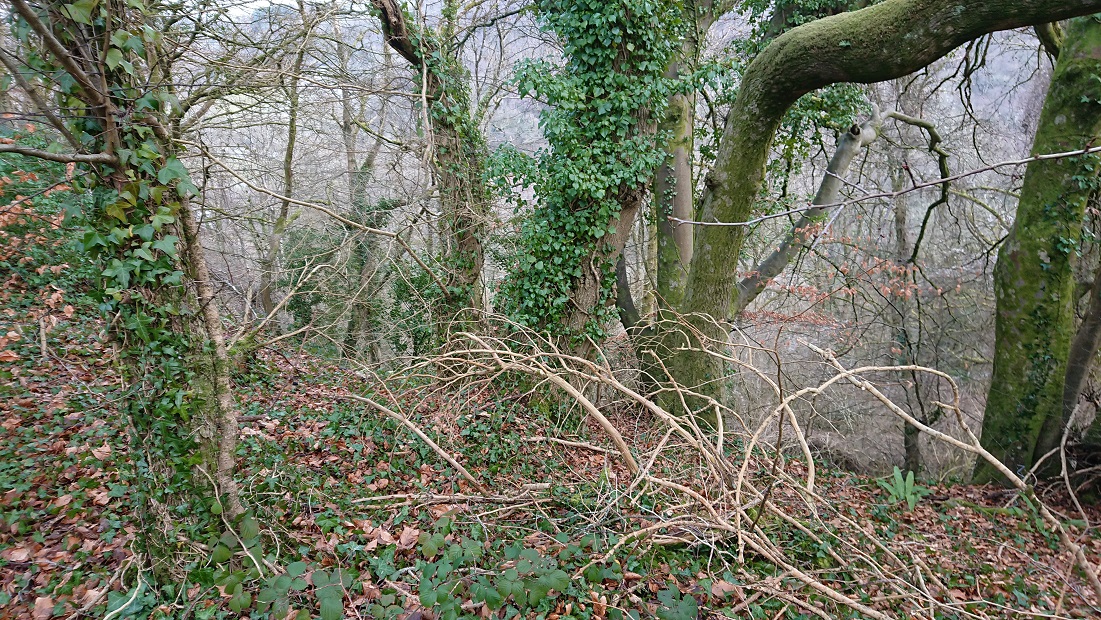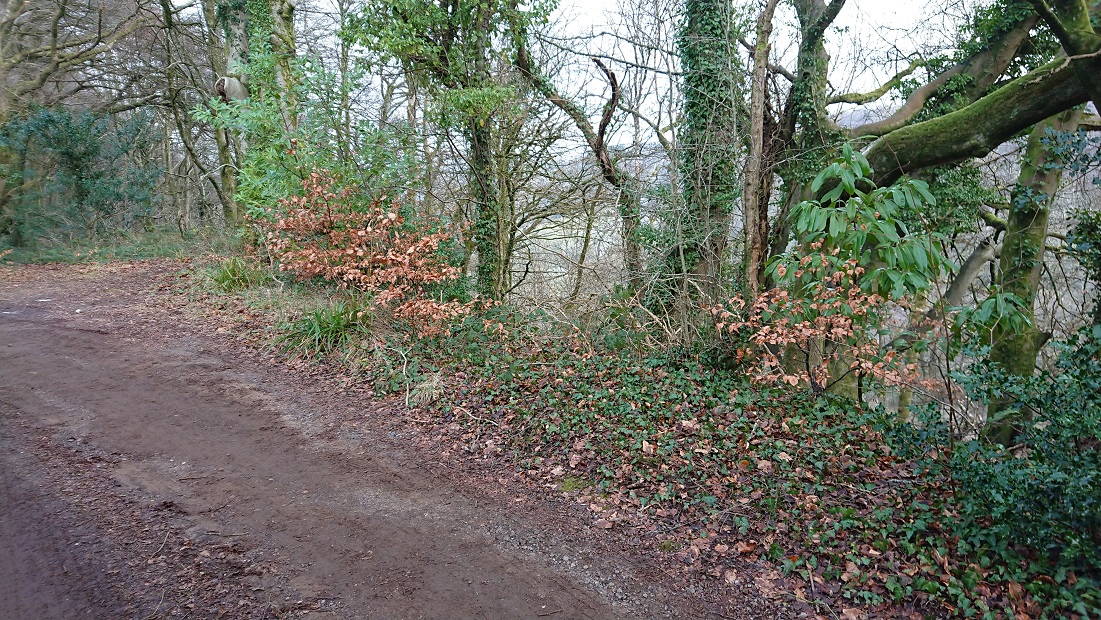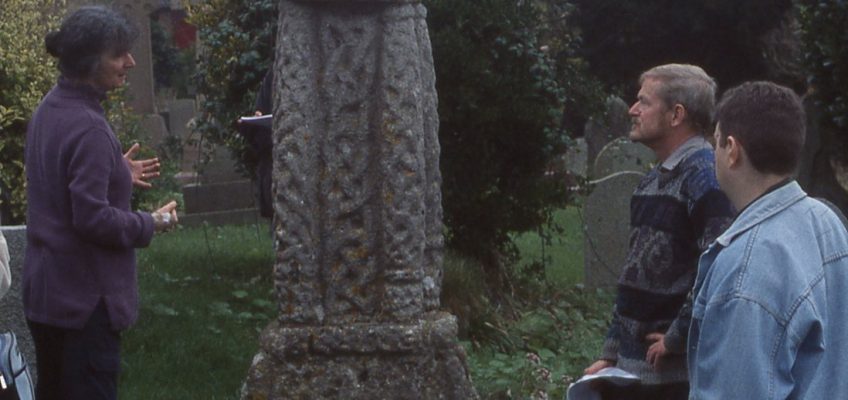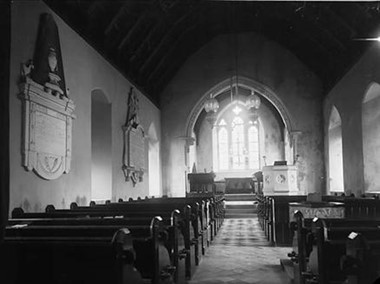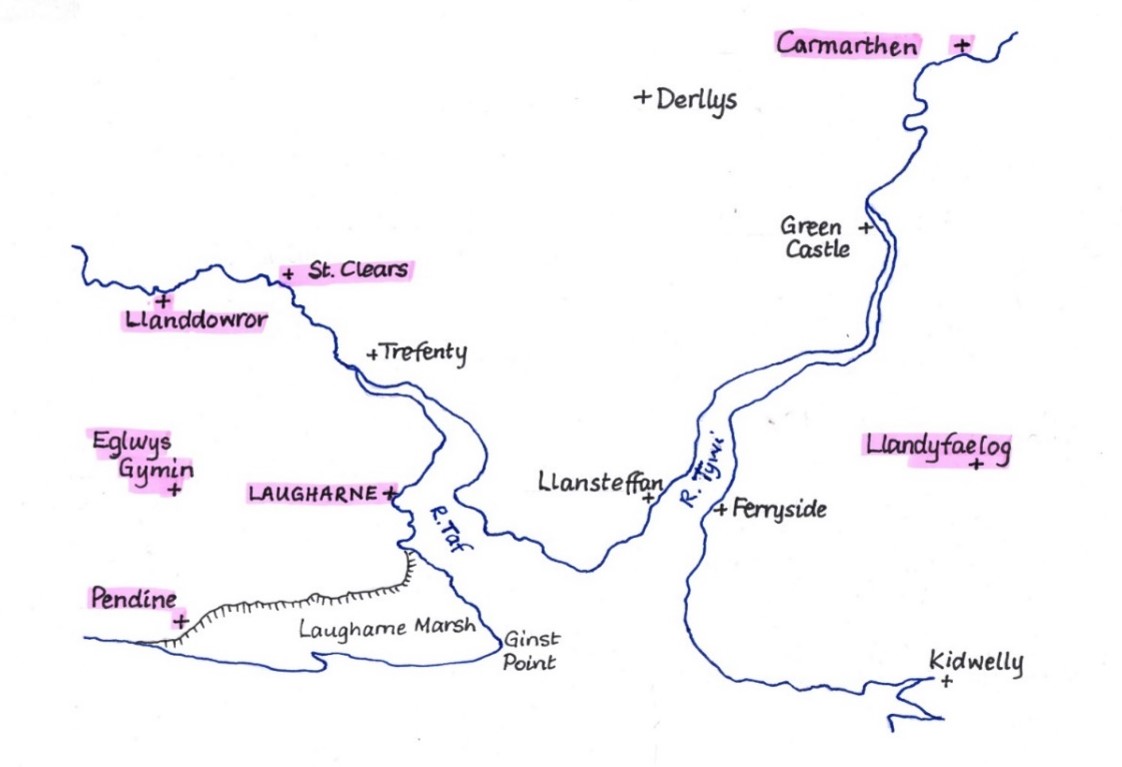Amy and I set off to Mitchel Troy, just south of Monmouth, to look for this
https://twitter.com/johnevigar/status/1716331933066572125
which the wonderful John Vigar posted on Twitter back in October.
It’s a medieval church, probably part of the great Norman rebuilding of churches in south-east Wales, but heavily restored by John Prichard in 1873-6. Recently the parish has raised some serious funding to provide a kitchen, toilet facilities and more comfortable seating. (Replacing the Victorian pews probably caused howls of outrage but chairs are (a) infinitely more comfortable and (b) more flexible.)
The base of the west tower could be late C12/early C13. Built into the SW buttress, about 5’ up, is this
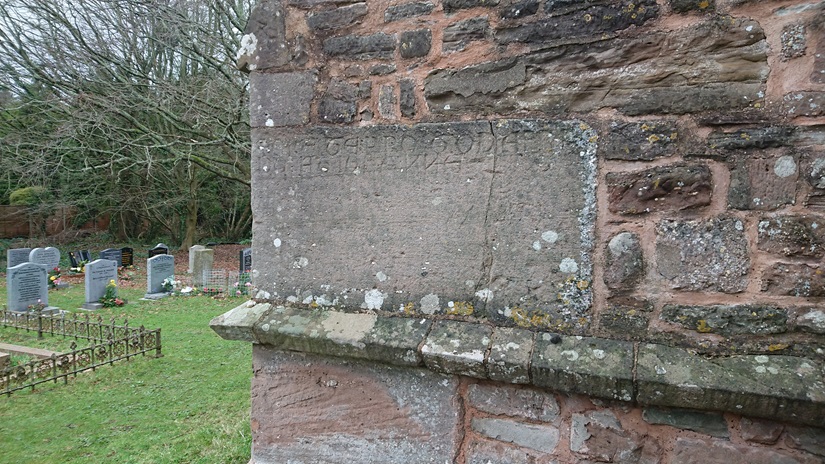
ORATE PRO GODEFRI
DO ET JOHANNE
Did they contribute to the building of the tower, or could it possible be a tombstone? It’s rather short, and a hefty lump of stone. The west end has been used for a benchmark.
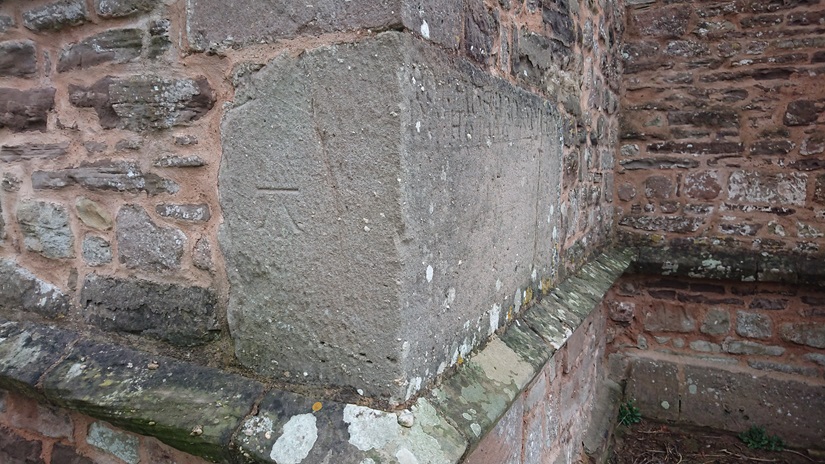
Inside we found this
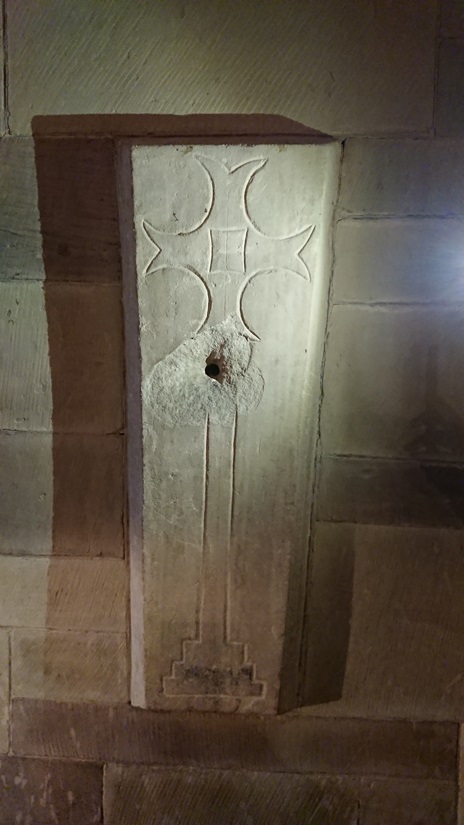
A miniature cross slab, probably C13 – possibly commemorating a child, but perhaps more likely to have been a heart burial. . It was discovered during the reconstruction, turned over and reused as the base of a piscina (see the drilled drainage hole). That must have been later medieval reuse.
But where was John Vigar’s stone? Eventually Amy spotted it,
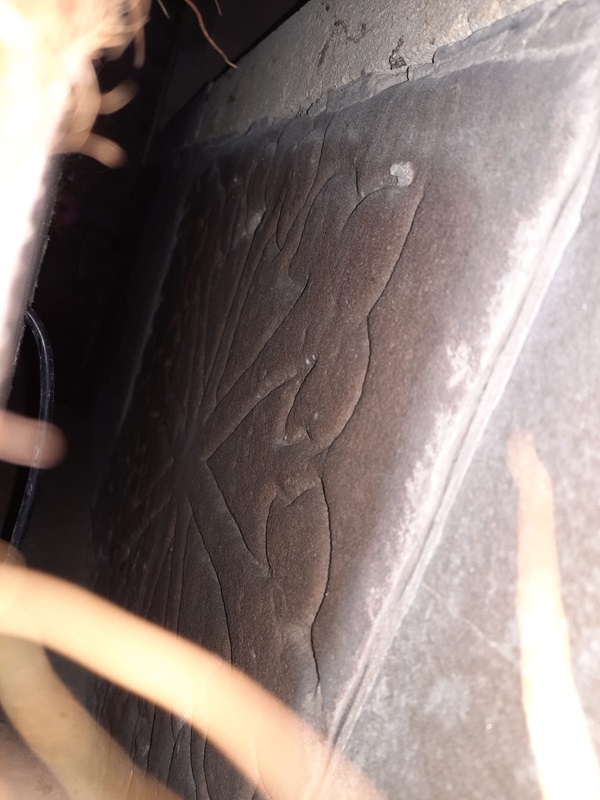
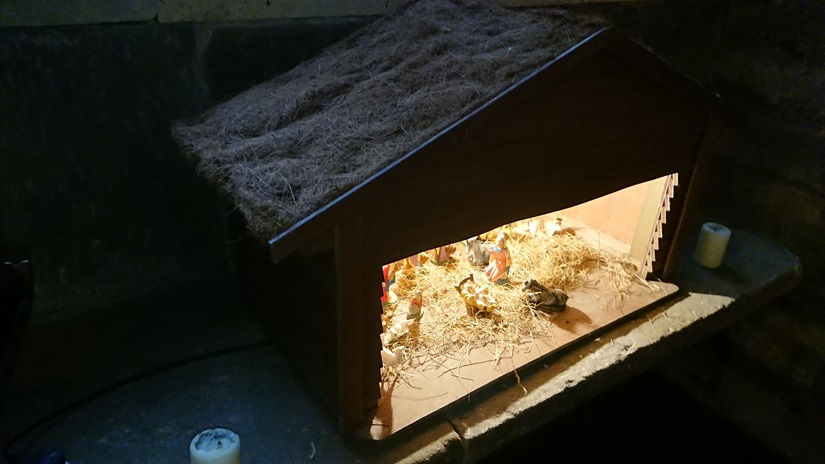
The perils of church-crawling at Christmas. It’s a good excuse to go back. And I probably ought to measure all the slabs.
I can’t see me measuring this one, though – in the SE angle, is this a fragment of the shaft of a medieval cross slab?
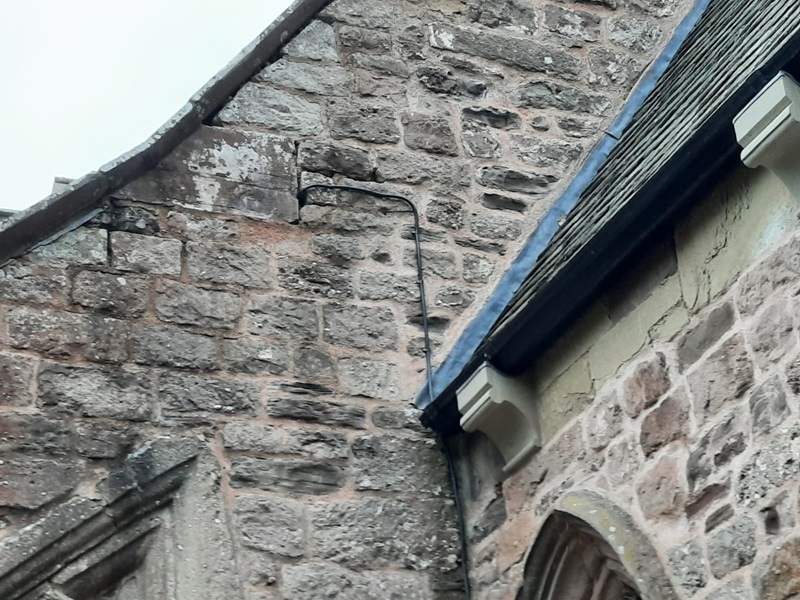
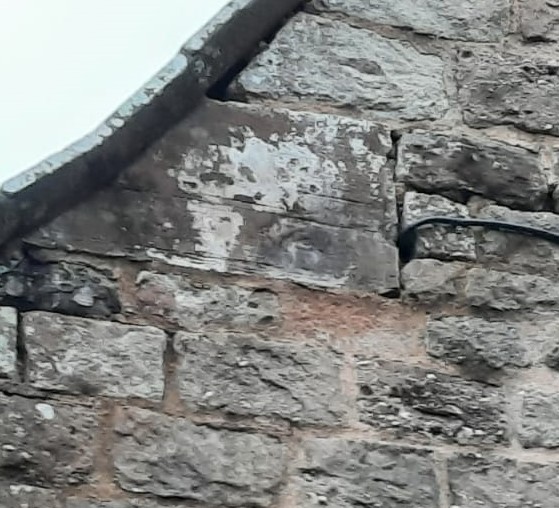
There’s a lot to enjoy in the churchyard. Several headstones with chubby cherubs
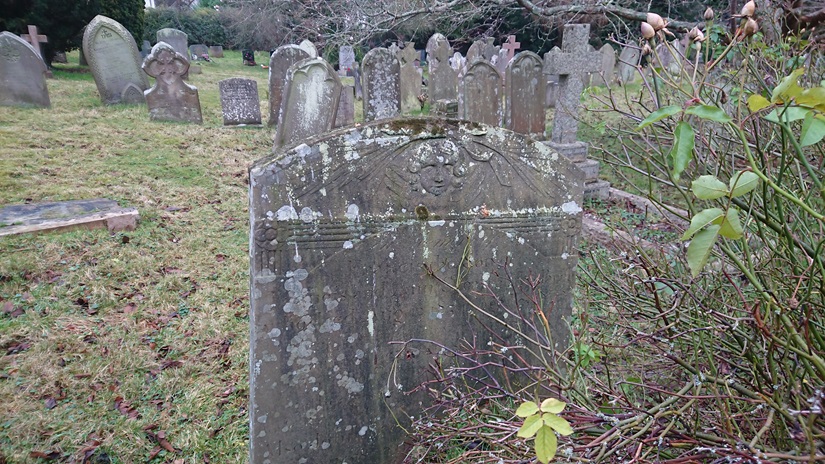
But one local firm of stonemasons seems to have specialised in elaborately-draped urns – a range of styles
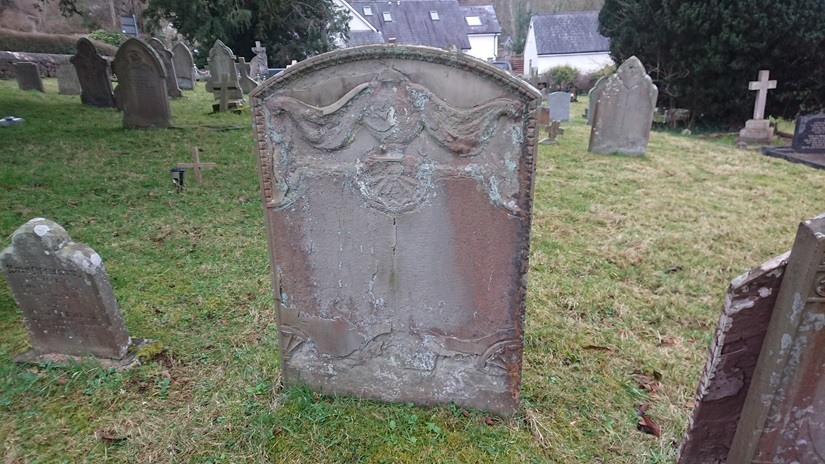
And this one with both urns and cherubs.
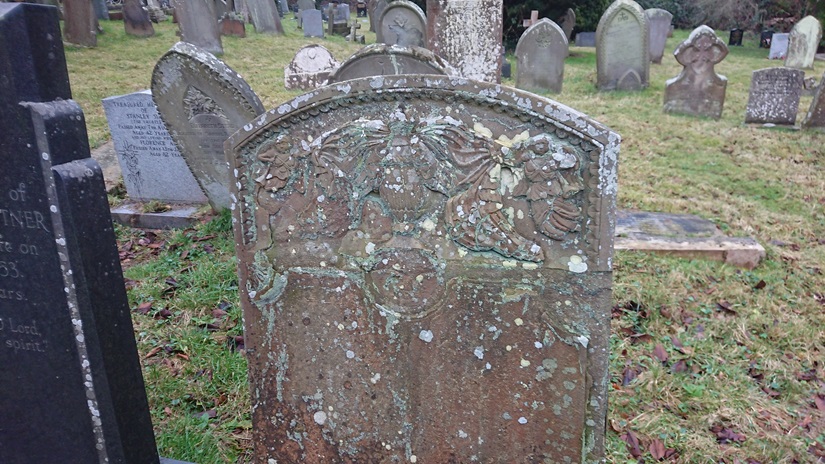
This one has the angel of the Last Judgement
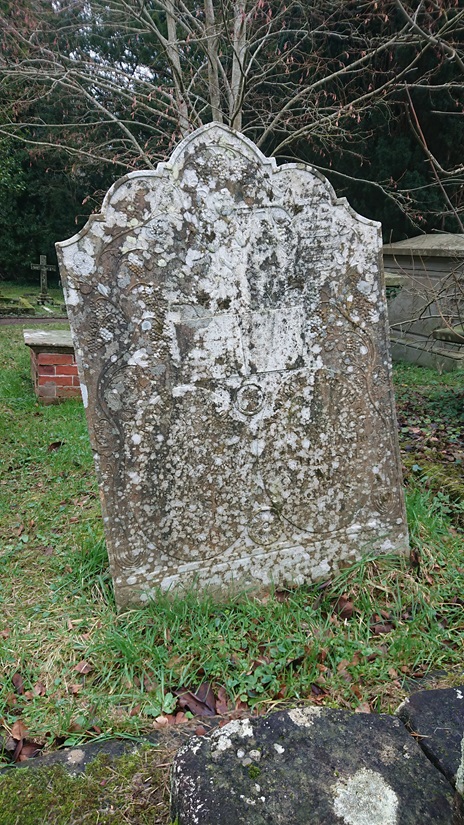
With a scroll beginning ‘Arise ye dead and come to judgement’
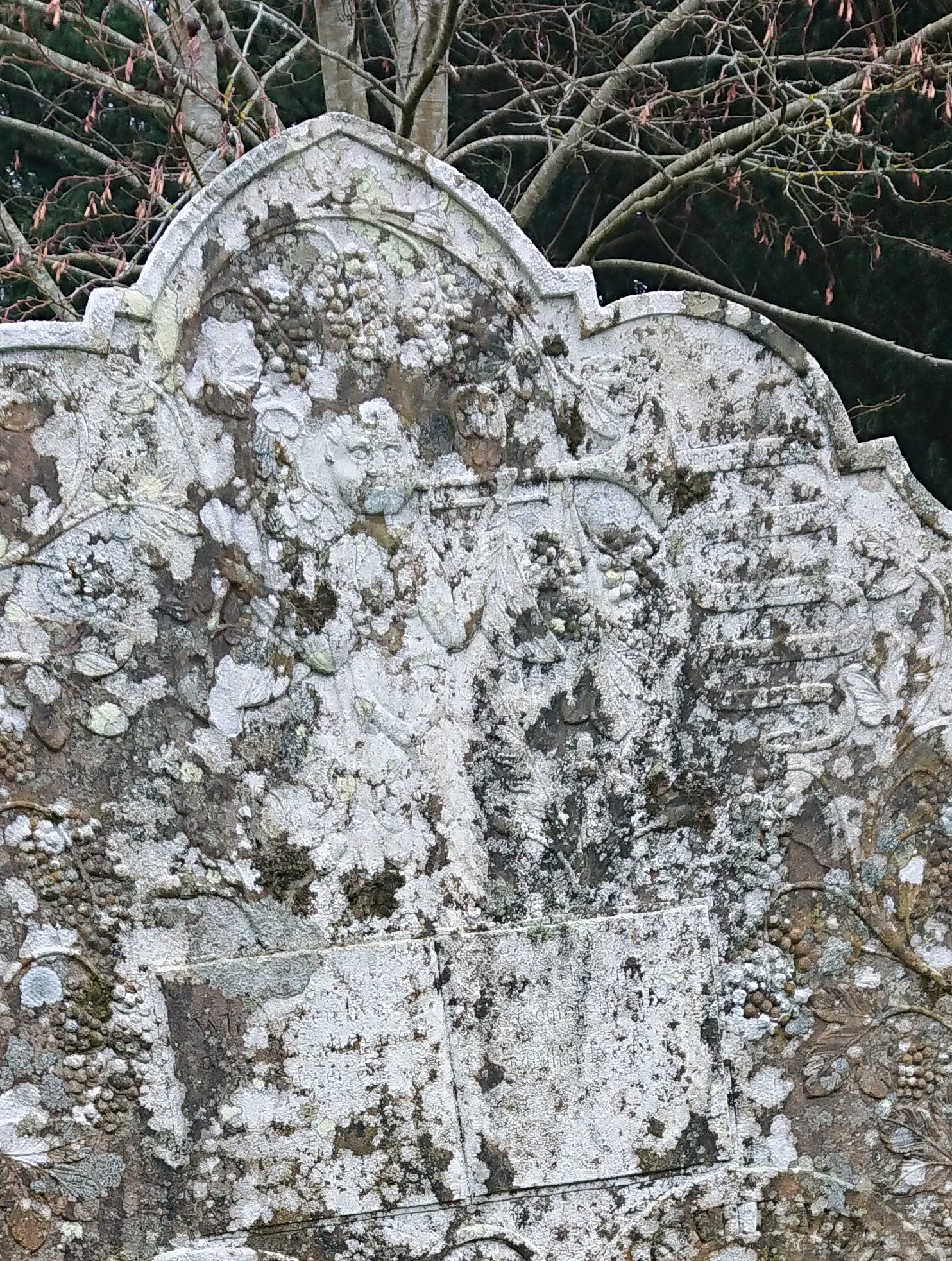
– there’s a lot more text on the stone but frustratingly just below the margin of legibility. Another reason for a second visit on a dry day.
We also found something like the Luggage from Terry Pratchett
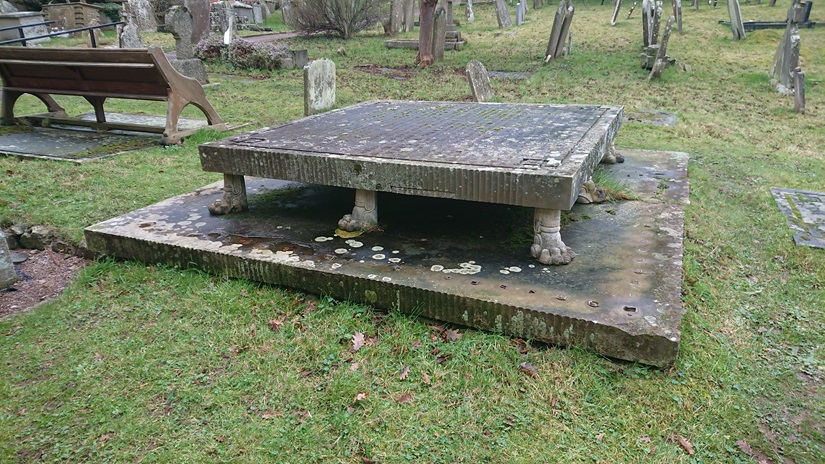
And this, an unusual way of putting a cross on a grave.
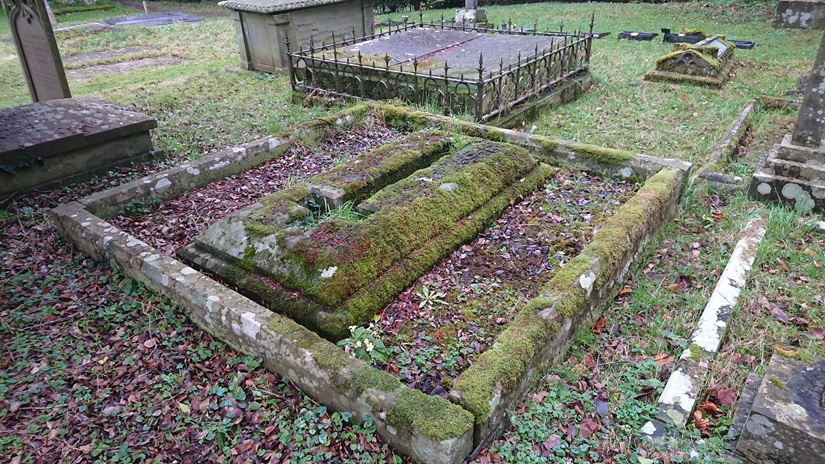
The churchyard has its medieval churchyard cross with the shaft still in place, decorated with shields and ballflower.
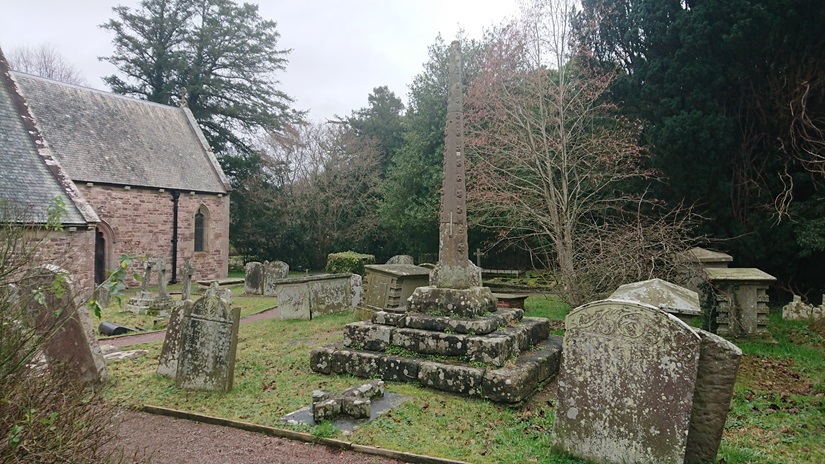
A good day – and already looking forward to a revisit.
